Cardiff, Wales (combined with a few days in London) earlier this year was our most recent European spring break. Our Cardiff itinerary included 5 nights/4 days in the city and we were able to see most everything that we had planned during that time. We spent two full days exploring Cardiff – one in Cardiff City Centre and one in Cardiff Bay – plus two full days on day trips to see more of South Wales.
These are our recommendations of the best things to do in Cardiff plus suggested day trips from the city as well as our pick on where to stay in Cardiff.
This post may contain affiliate links. If you click an affiliate link and make a purchase then we receive a small commission at no additional cost to you.
Things To Do in Cardiff City Centre
We spent our first full day in Cardiff exploring the city centre. It also happened to be the day of a big rugby match between Wales and Ireland (the final match of the Six Nations tournament). We were able to experience the buzz in the city over the big game plus most everyone was either at the stadium or in a pub watching the match in the afternoon so the attractions we visited were not at all busy!
Visit Cardiff Castle
After breakfast at our hotel, we headed across the street to Cardiff Castle which is one of the most popular heritage attractions in Wales. The castle has nearly 2000 years of history dating back to when a Roman fort was first established on the site at the end of the 50s AD.
A Norman Keep was built after the Conquest and additional medieval fortifications over the years as ownership of the castle passed through noble families until it came to be owned by the Bute family in 1766. Following the death of the 4th Marquess of Bute in 1947, the family donated the castle and lands to the city of Cardiff and beginning in 1974 it was opened to the public as a tourist attraction.
The Castle Ticket includes access to the Castle grounds, the Norman Keep, the Castle apartments, the Roman Chariot Corner, the Wartime Tunnels, and Firing Line: The Cardiff Castle Museum of the Welsh Soldier – all of which can be explored at your own pace.
After taking the requisite photos with the red Welsh dragon, we decided to explore the Keep. It’s about 50 steep stone steps up to the Keep itself and then more to get to the viewing platform at the top for the panoramic views of the city. I have vertigo and didn’t find the climb too bad and the views are definitely worth it. It was so windy the day that we visited that we didn’t great photos though – I looked a bit like Medusa with my hair flying every which way!
We also enjoyed walking through the Wartime Tunnels used as air raid shelters during WWII and visiting the lavishly decorated Apartments.
Located at the junction of Castle Street and High Street. Open 7 days a week all year except for December 25, 26 and January 1. Opening and closing times vary by season. Check the website for details. Free audioguide included with each ticket. Cafe and gift shop on site.
Travel Tip: Even if you don’t want to take the time to visit the castle you can still get a photo of the Keep and the dragon for free.There’s a second barrier inside the entry gates and visitors are welcome to take photos from there without purchasing a ticket to enter the grounds.
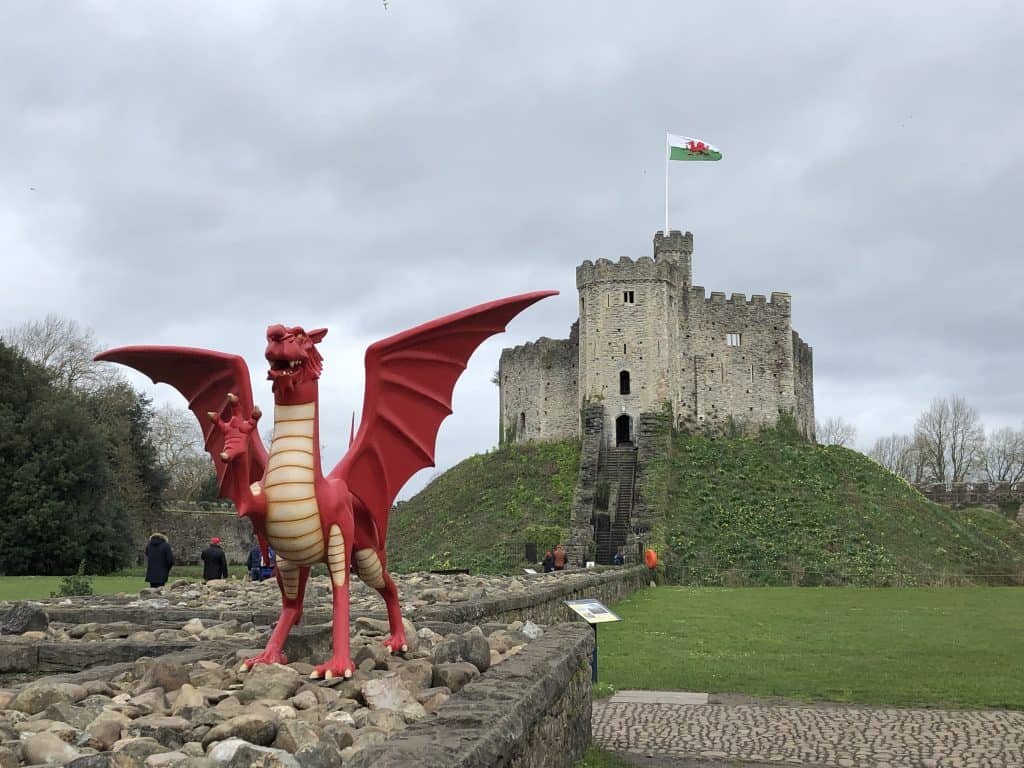
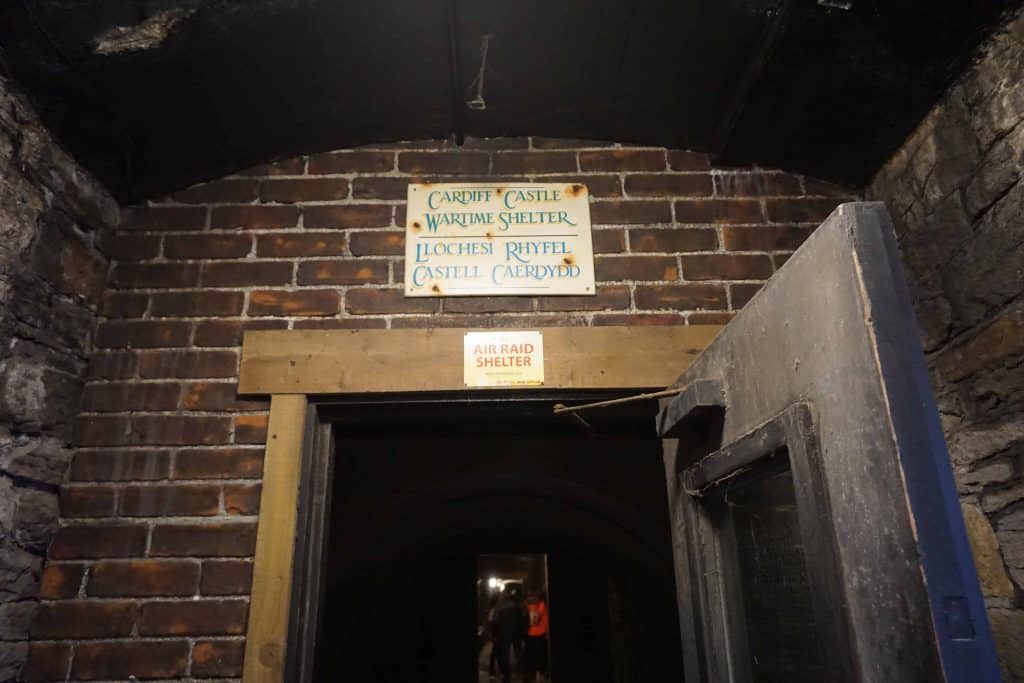
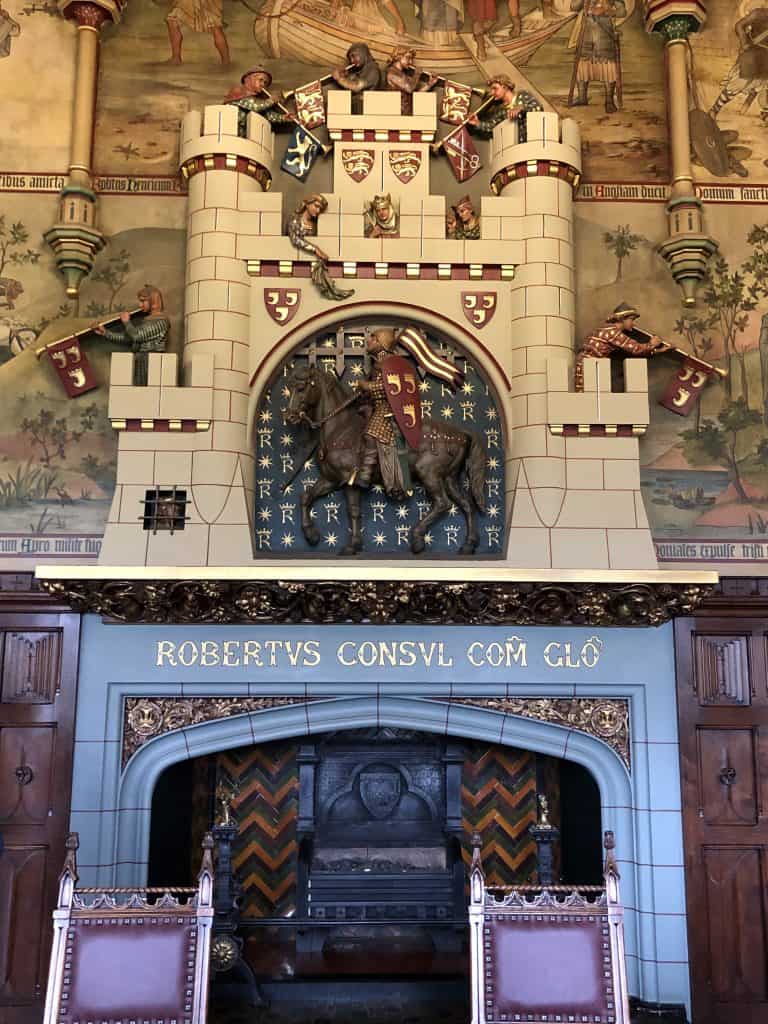
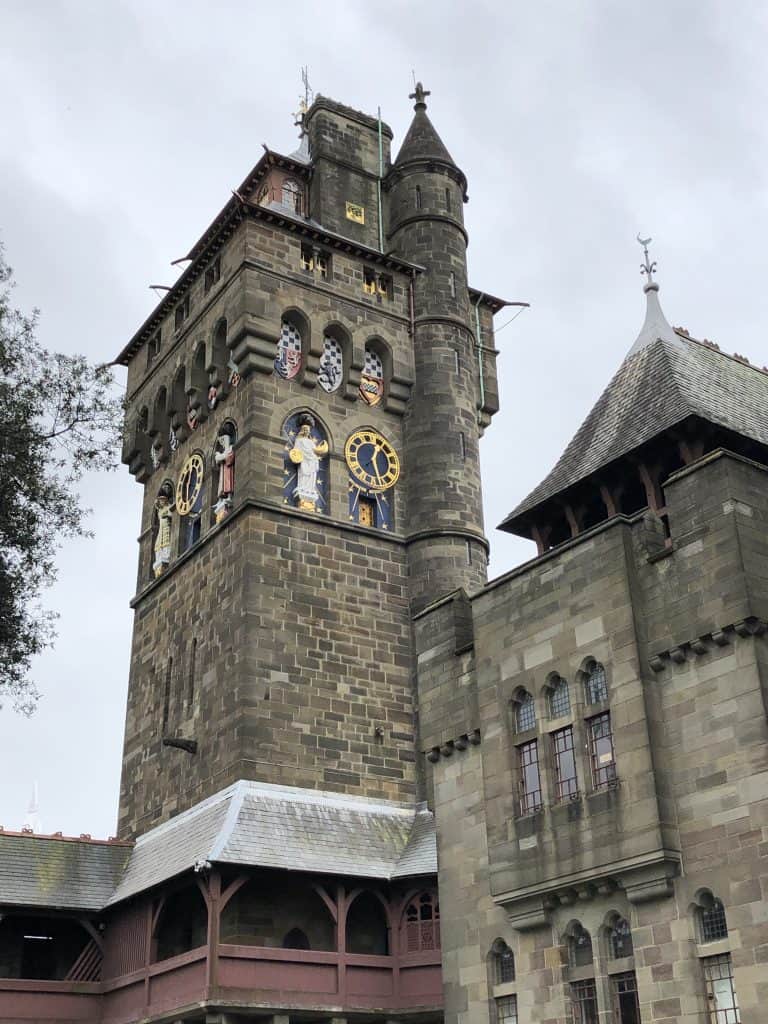
Walk by the Animal Wall
Be sure to walk by the Animal Wall which you will find alongside Cardiff Castle as it’s one of the most photographed historic features in Cardiff! The wall was designed by architect William Burges for the 3rd Marquess of Bute, however, he died before the project was completed and William Frame took over. The original wall with 9 animals was more or less completed by 1892. The wall was moved to a new position due to street widening after World War I and 6 new animals were added for a total of 15.
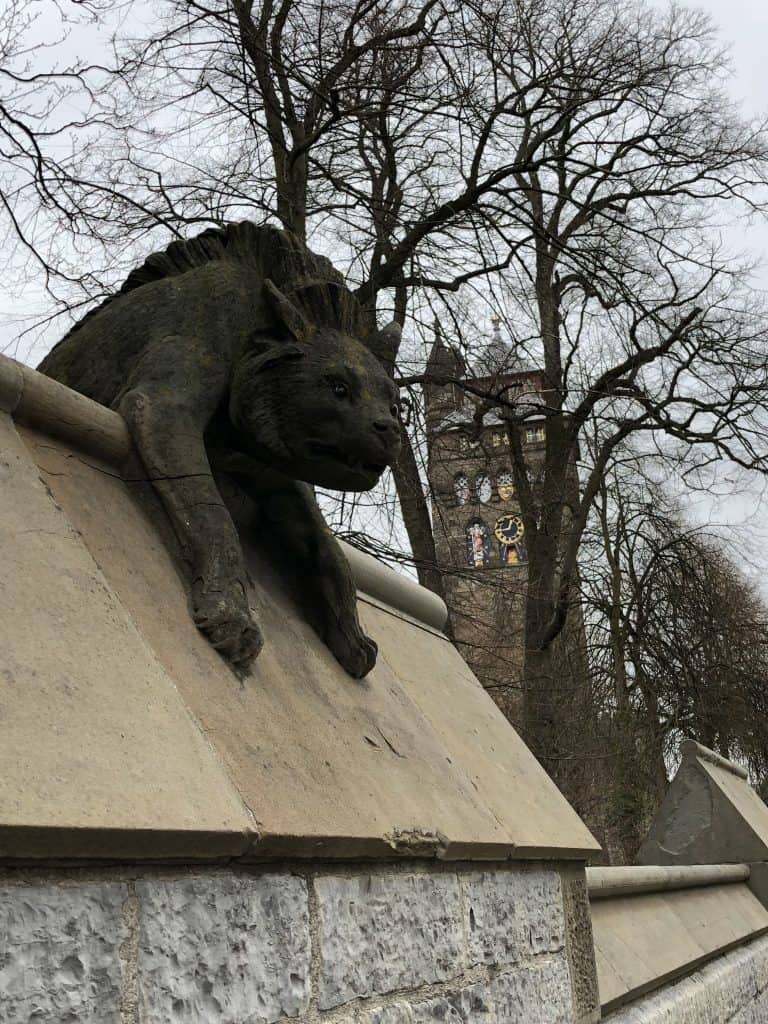
Shop or Browse the Victorian Arcades
One of the things that Cardiff is known for is the unique Victorian and Edwardian shopping arcades. These indoor shopping areas, originally built in the 19th century (with the exception of one built in 1921), have an interesting mix of independent shops, cafes and restaurants – all protected from the elements. Strolling through the arcades was one of my favourite things to do in Cardiff and I can just imagine how beautiful they must be decorated for the Christmas shopping season.
The 7 historic arcades are: Castle Arcade, High Street Arcade, Duke Street Arcade, Dominions Arcade, Morgan Arcade, Royal Arcade, and Wyndham Arcade. You can find out more about each of the arcades at www.thecityofarcades.com
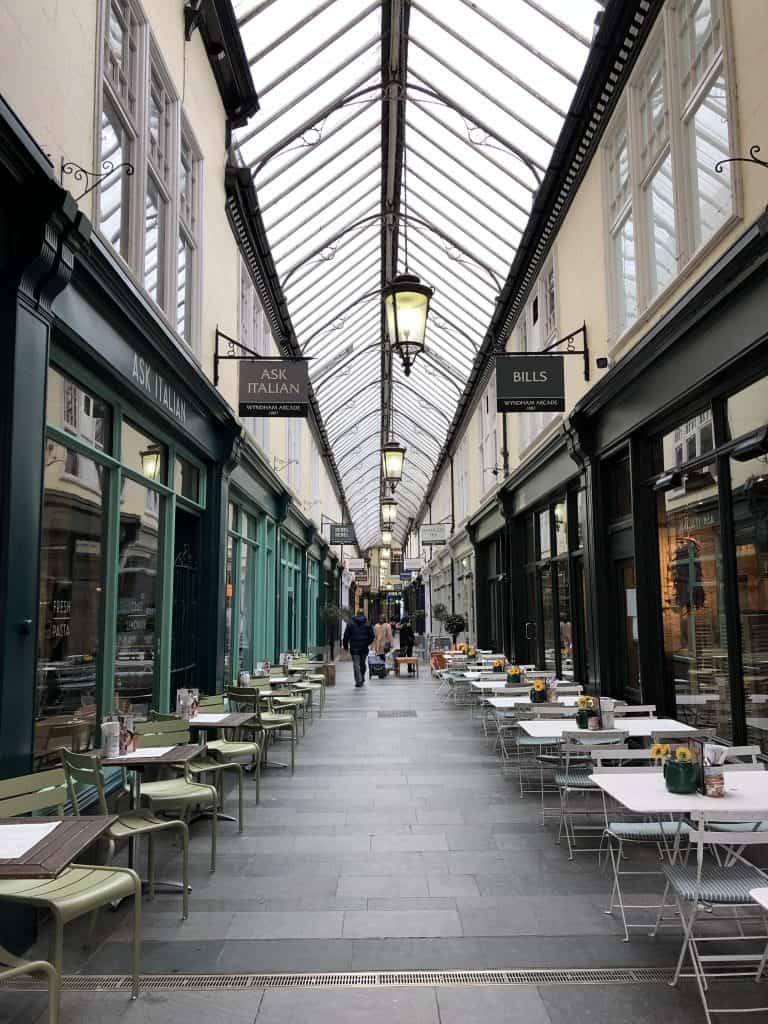
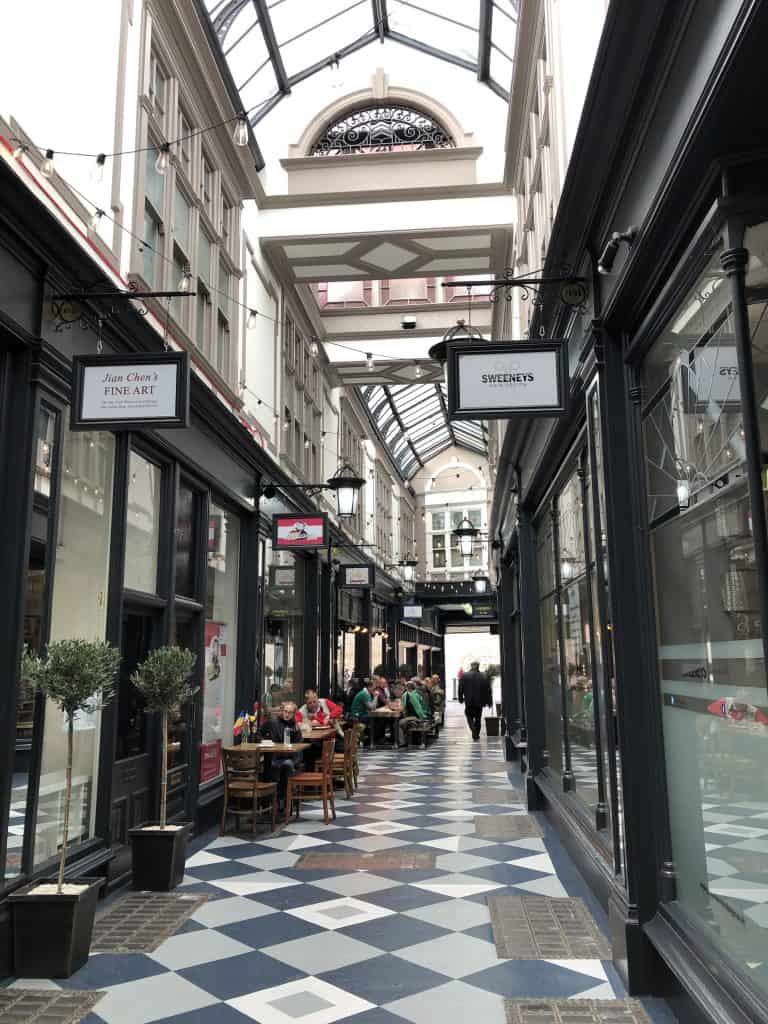
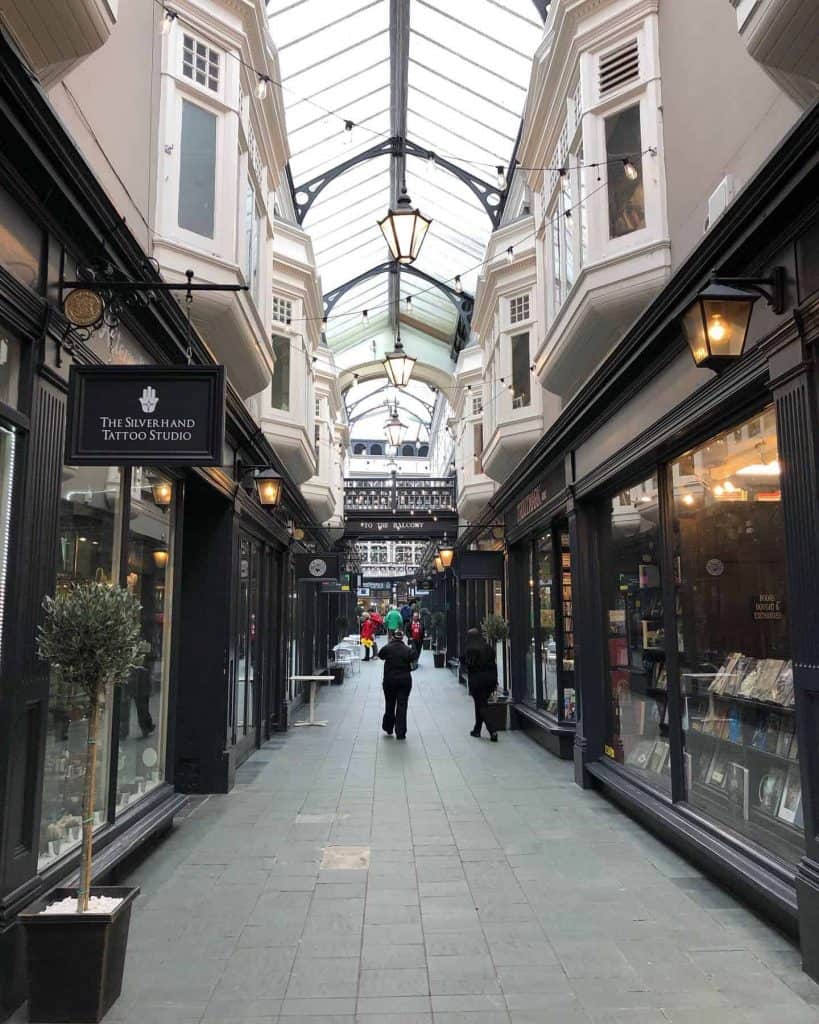
Principality Stadium (Millennium Stadium)
Principality Stadium (previously known as Millennium Stadium) which opened in 1999 is a state-of-the-art facility with a fully retractable roof and a seating capacity of more than 74,500. The stadium is a multi-purpose facility and home to the Welsh Rugby Union.
You can check the event listings on-line if you are planning a visit to Cardiff and would like to attend a match or other event at the stadium and tours of the stadium are also available. We walked past as the crowds were arriving for the rugby match so we got a look at the building and also enjoyed the atmosphere with all the excited rugby fans.
Located on Westgate Street, Cardiff.
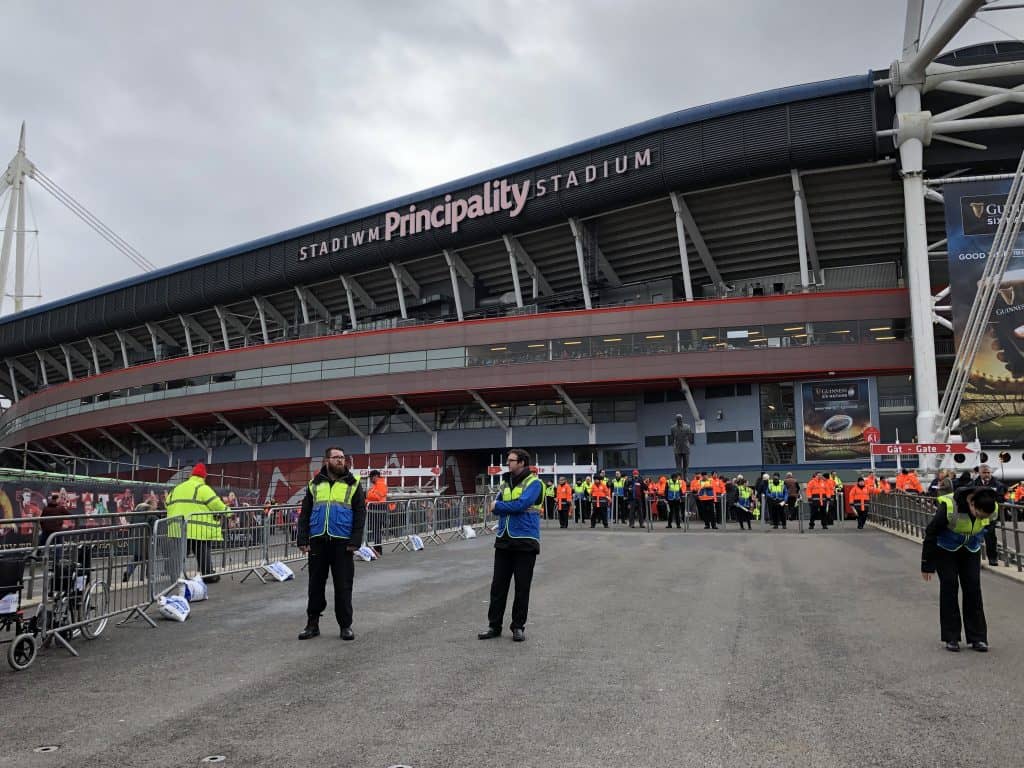
Visit The Cardiff Story
The Cardiff Story is a small museum which tells the story of how Cardiff transformed from a small market town in the 14th century, to one of the world’s largest ports in the 1900s to the cosmopolitan capital that it is today. We popped in to the museum during an unexpected rain shower and only spent about 30-45 minutes browsing the exhibitions but entry is free so it’s worth a look to learn more about the history of the city.
Located in The Old Library, The Hayes, Cardiff. Open Monday – Sunday 10am – 4pm. Free entry.
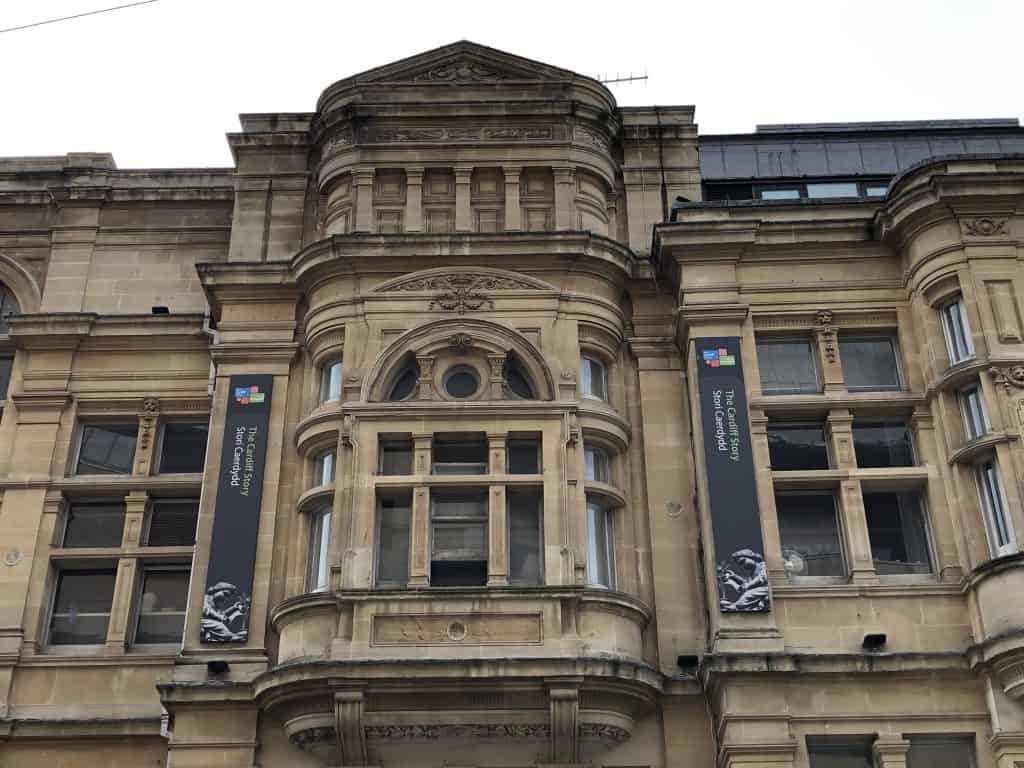
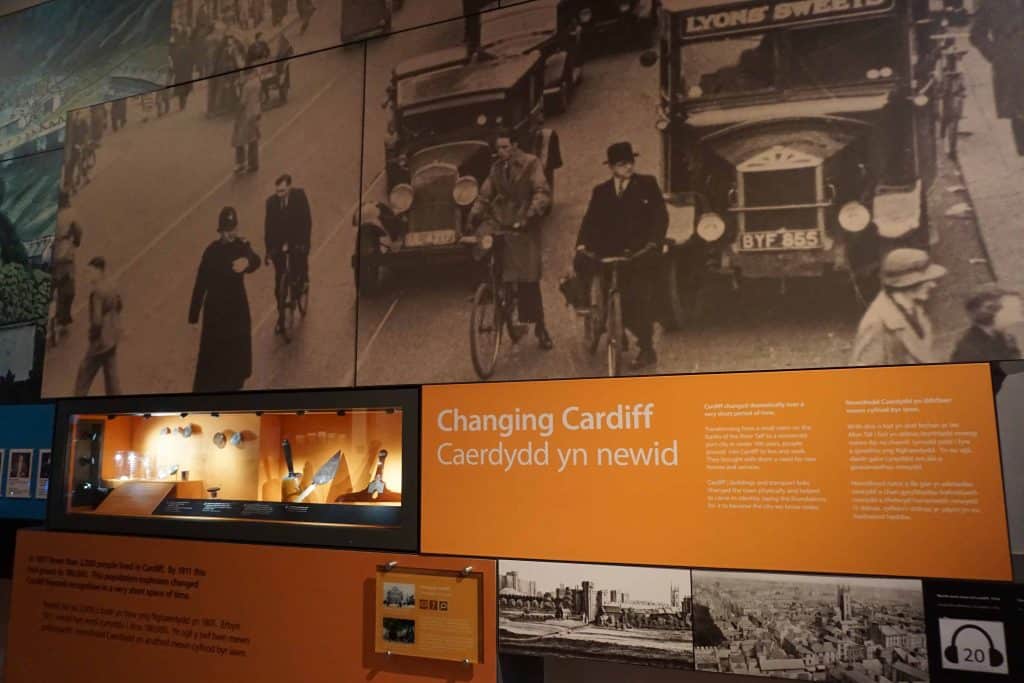
Enjoy Bute Park and Other Green Spaces
We visited Cardiff on the cusp between winter and spring in mid-March but there were already flowers and trees blooming and the parks were lovely and green.
Bute Park is a 146 acre green space in the heart of Cardiff which was part of the castle grounds at one time and now is one of the largest urban parks in Wales. The Bute family inherited the castle in 1766 and had begun to develop the grounds by the late 1800s. The Marquess of Bute gifted the castle and the grounds to the people of Cardiff in 1947 and the land was turned into a public park which opened in 1949. Attractions include an Education Centre, Gorsedd Stone Circle, a Woodland Play Trail, a Sculpture Trail, and more. There is also a water taxi stop in the park which is convenient for getting to Cardiff Bay.
We also had a walk through lovely Alexandra Gardens, Cathays Park which is in Cardiff’s Civic Centre where a number of grand public buildings are located including the National Museum, City Hall, Law Courts and Cardiff University. The Welsh National War Memorial is located here as well.
Bute Park opens at 7:30am and closes 30 minutes before sunset. Daily closing times are displayed on site. There are two cafes and tea rooms in the park.
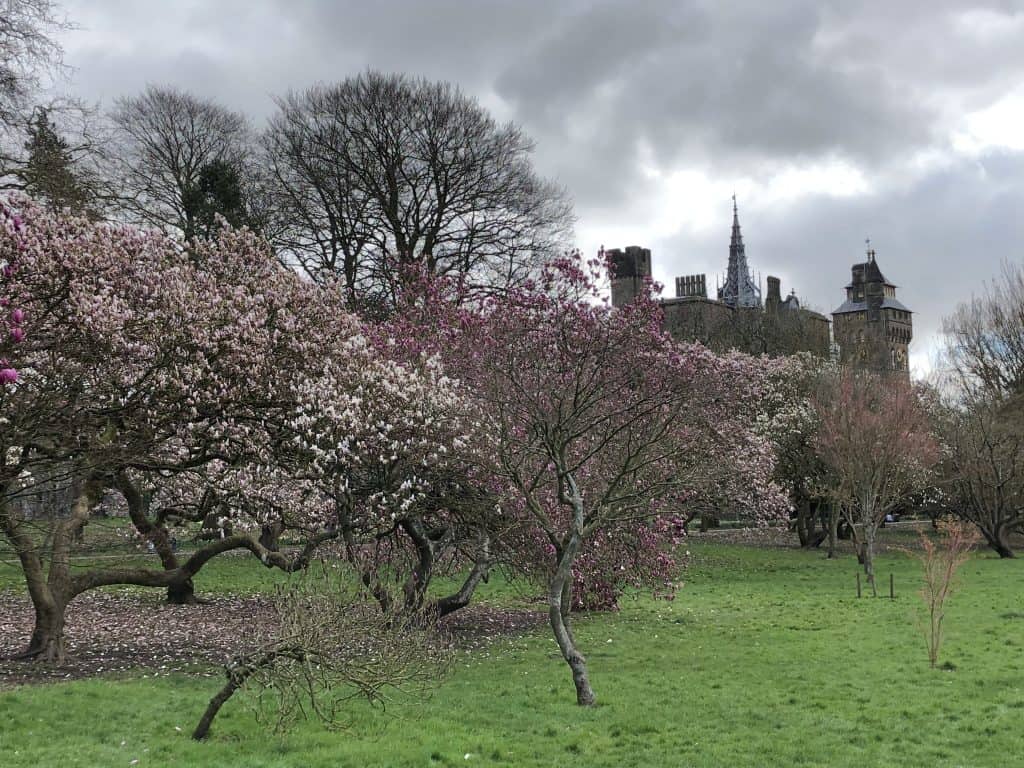
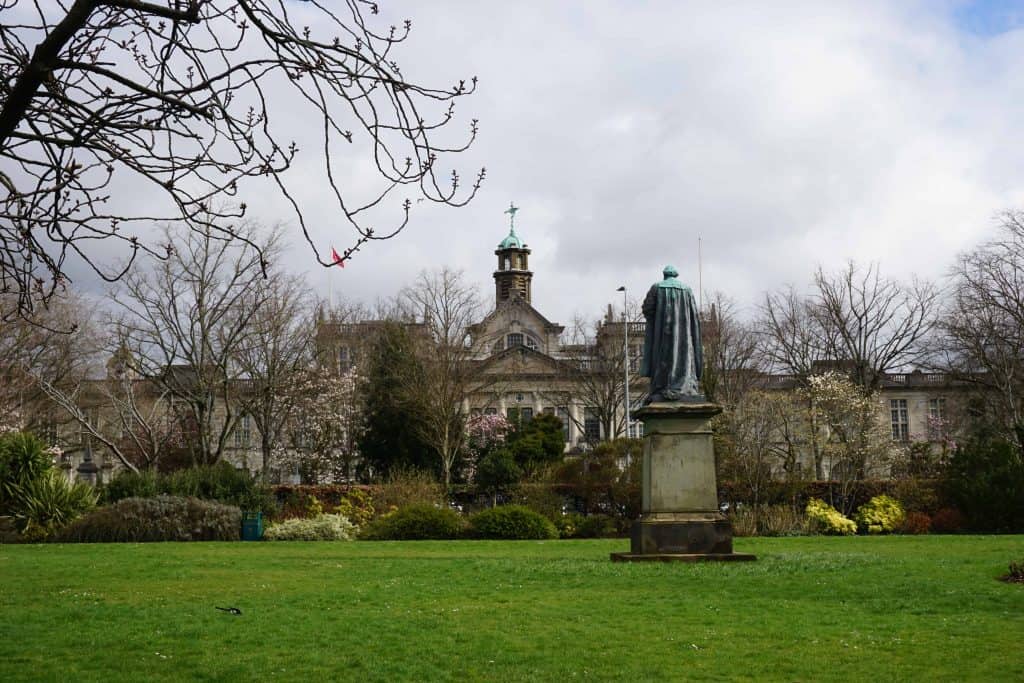
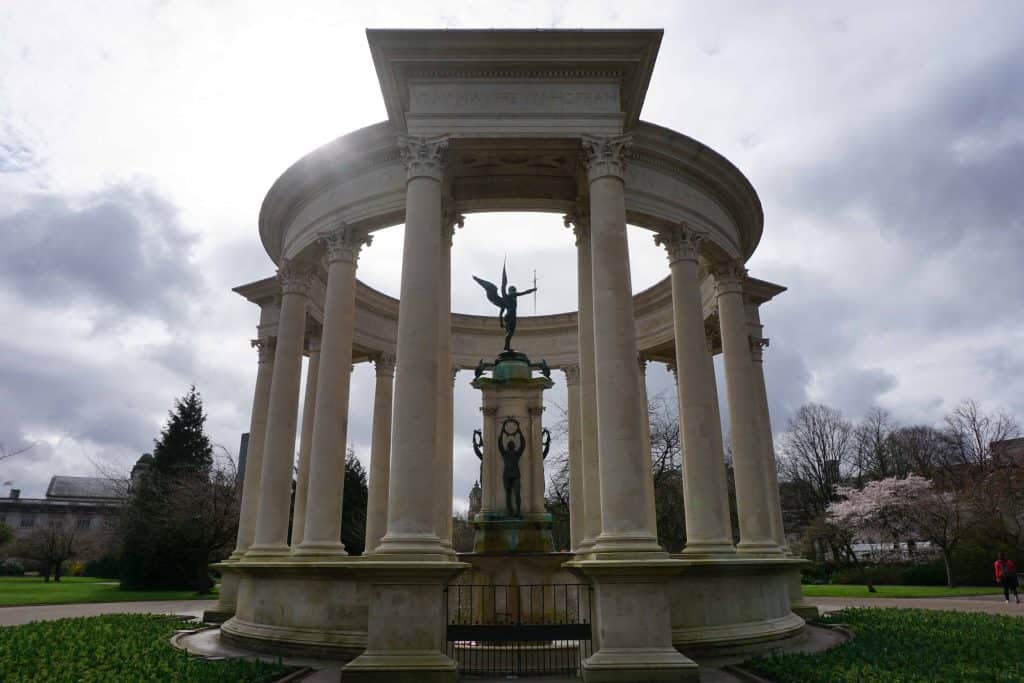
Pedestrian Shopping Districts
Much of Cardiff’s city centre is pedestrian which makes shopping that much more enjoyable. We particularly enjoyed the Queen Street which is entirely closed to traffic and has many high street brands. We also found this charming carousel – one of the things that I love about European cities!
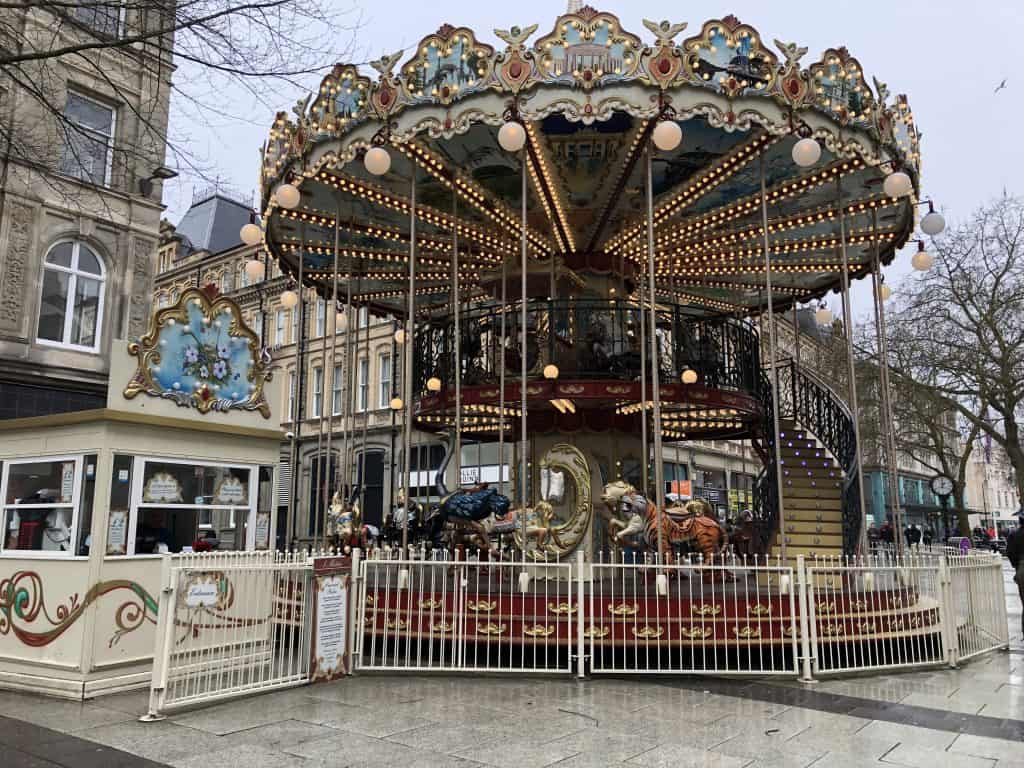
Shop at Cardiff Market (Central Market)
Cardiff Market, originally the site of Cardiff gaol, is a Victorian building that has occupied the same site in the heart of the city for over 100 years. The market is filled with local businesses offering a variety of products ranging from Welsh cuisine to fashion and lifestyle.
Located at 49 St. Mary Street – additional entrance at Trinity Street (near St. John’s Church). The Market is open Monday – Saturday 8am – 5:30pm.
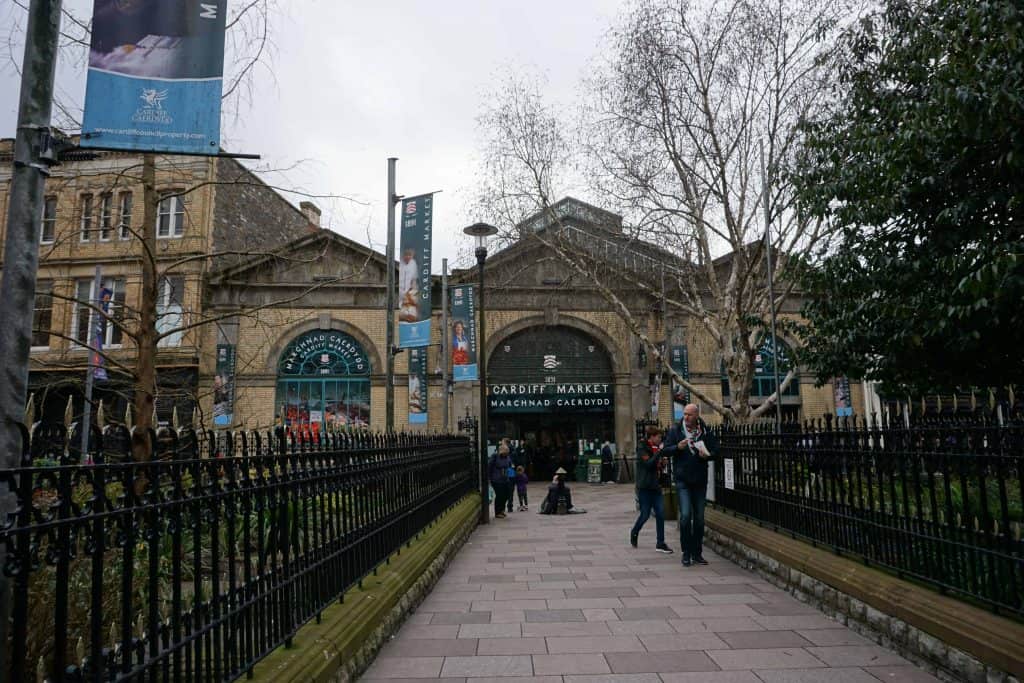
St. David’s Cathedral
The Metropolitan Cathedral of St.David is the seat of the Roman Catholic Archbishop of Cardiff and is located in the heart of Cardiff City Centre. The original church was built in 1842 and dedicated to St. David, the patron saint of Wales. The current building was constructed 1884-87, suffered heavy bomb damage during World War II and was restored/rebuilt in the 1950s. We poked our heads in just for a few minutes to have a look around. The architecture and design is not as elaborate as many European cathedrals but still quite beautiful in its simplicity.
Located at 38 Charles Street.
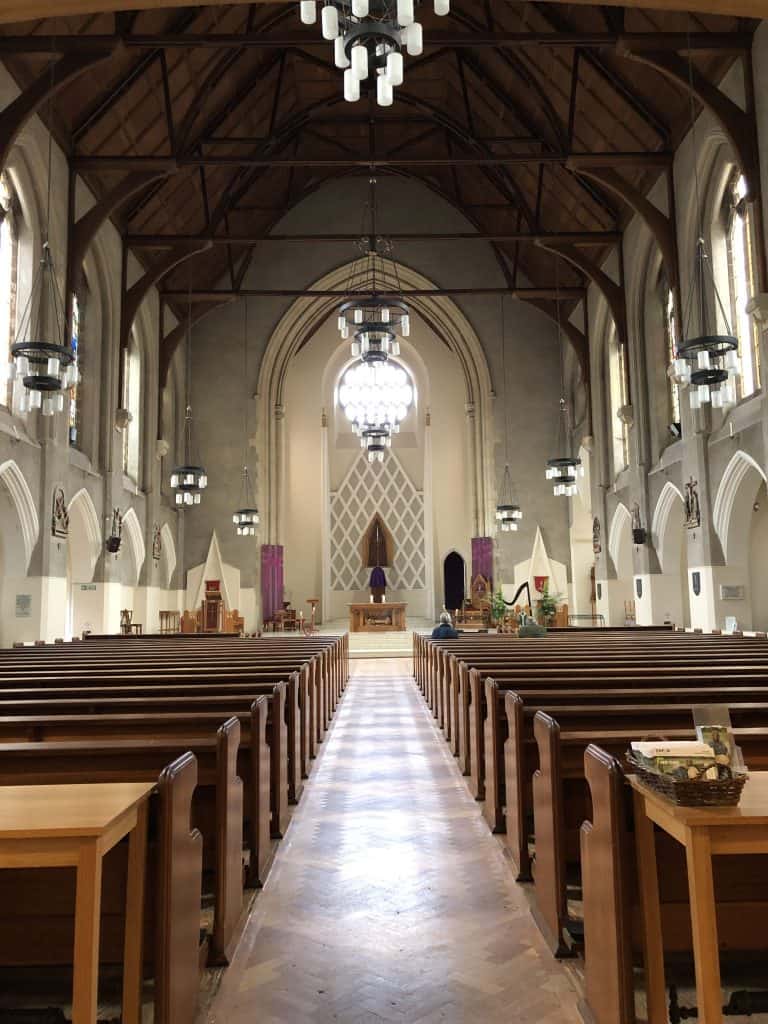
Visit the National Museum Cardiff
The National Museum Cardiff was our final stop of the day – it was pouring rain by this time and we were happy to get inside out of the weather! The National Museum Wales is a group of 7 museums one of which is the National Museum Cardiff. The National Museum Cardiff houses Wales’s national art, geology, and natural history collections as well as temporary exhibitions.
Art is more our thing so we spent most of our visit in the art galleries. The museum has one of Europe’s best collections of Impressionist and Modern Art which is a favourite of ours and we also appreciated seeing works of Welsh artists for the first time. We also enjoyed learning about the natural history of Wales in the galleries focusing on the evolution of Wales from the beginning of time until the present day.
Located in Cathays Park, Cardiff. Open Tuesday – Sunday 10am – 5pm. Closed December 25, 26 and January 1. Entry is free.
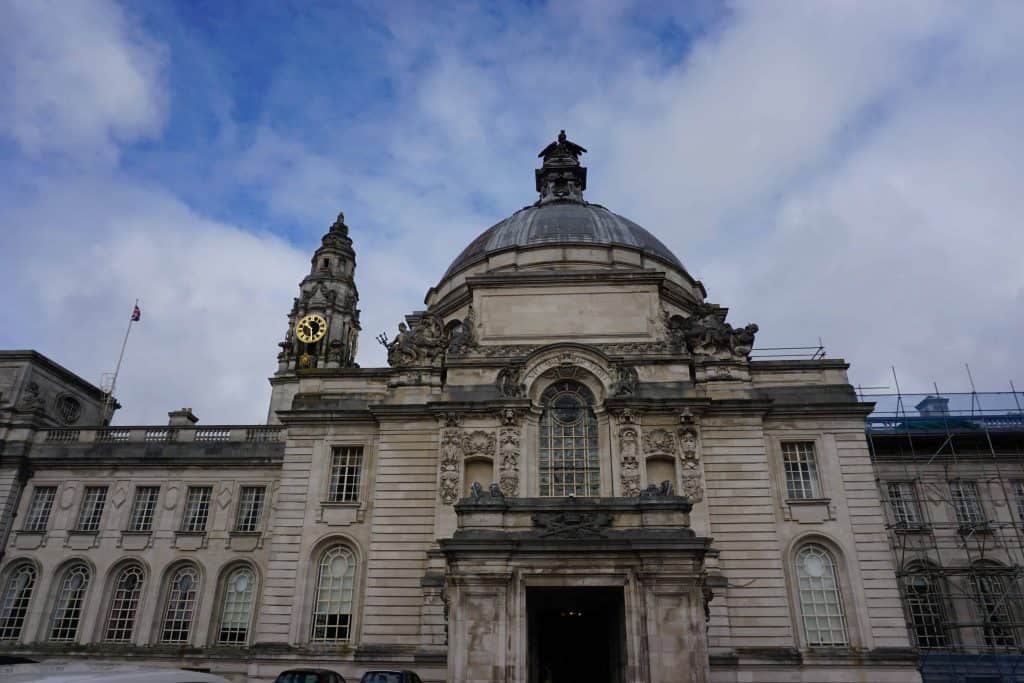
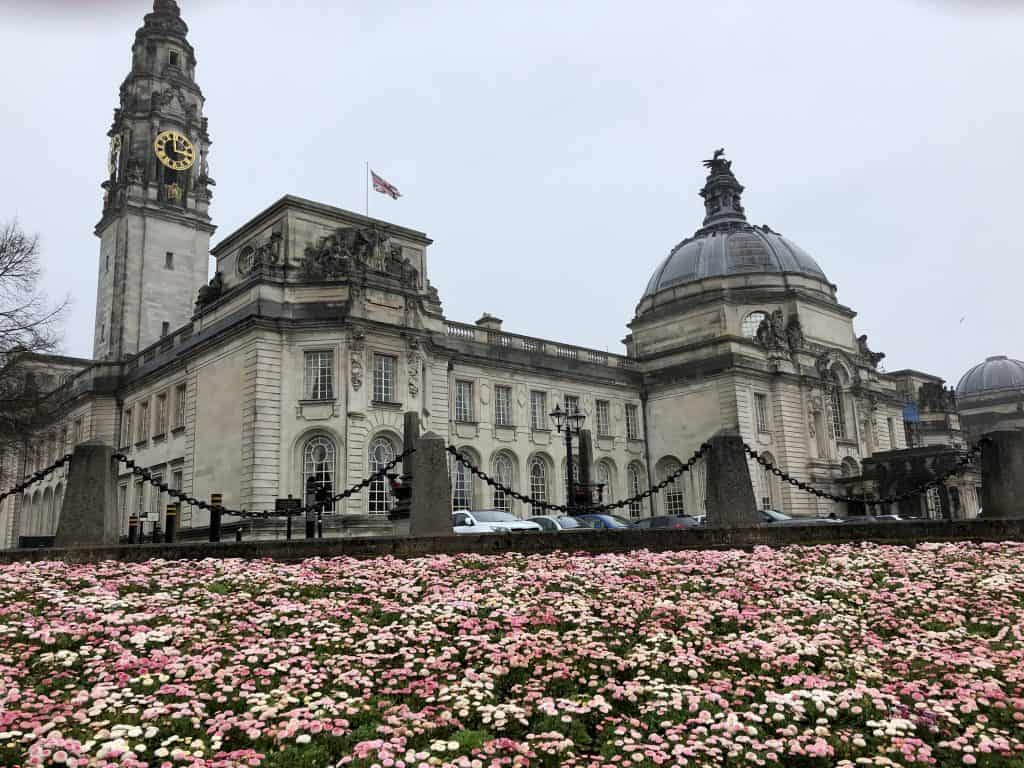
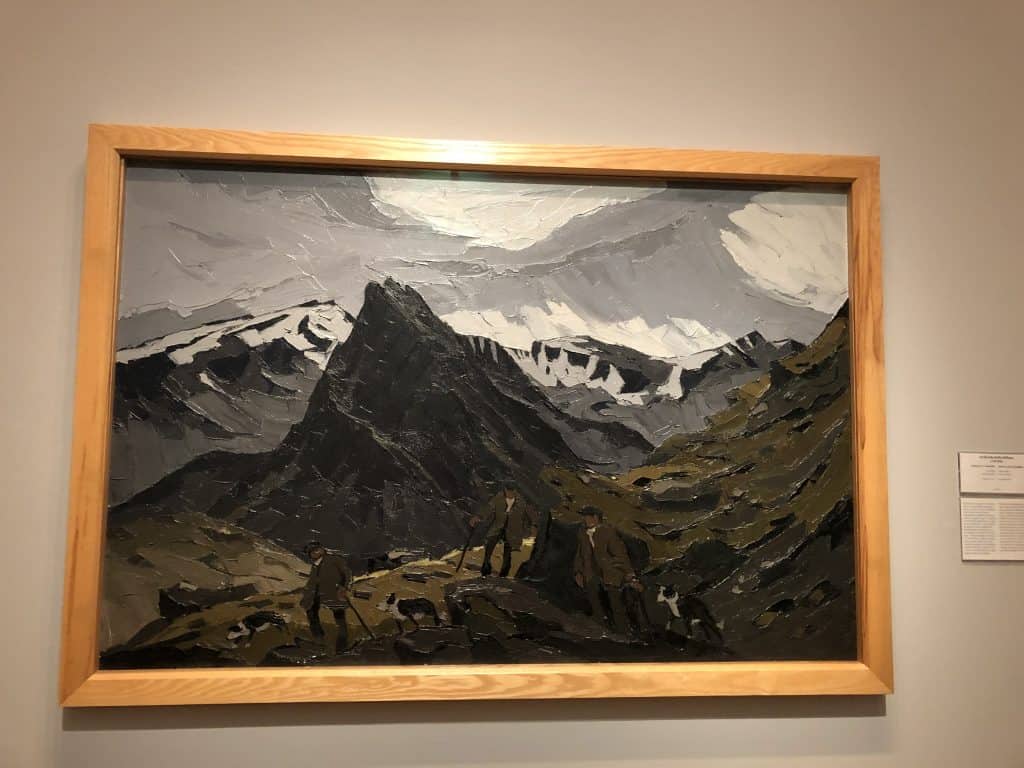
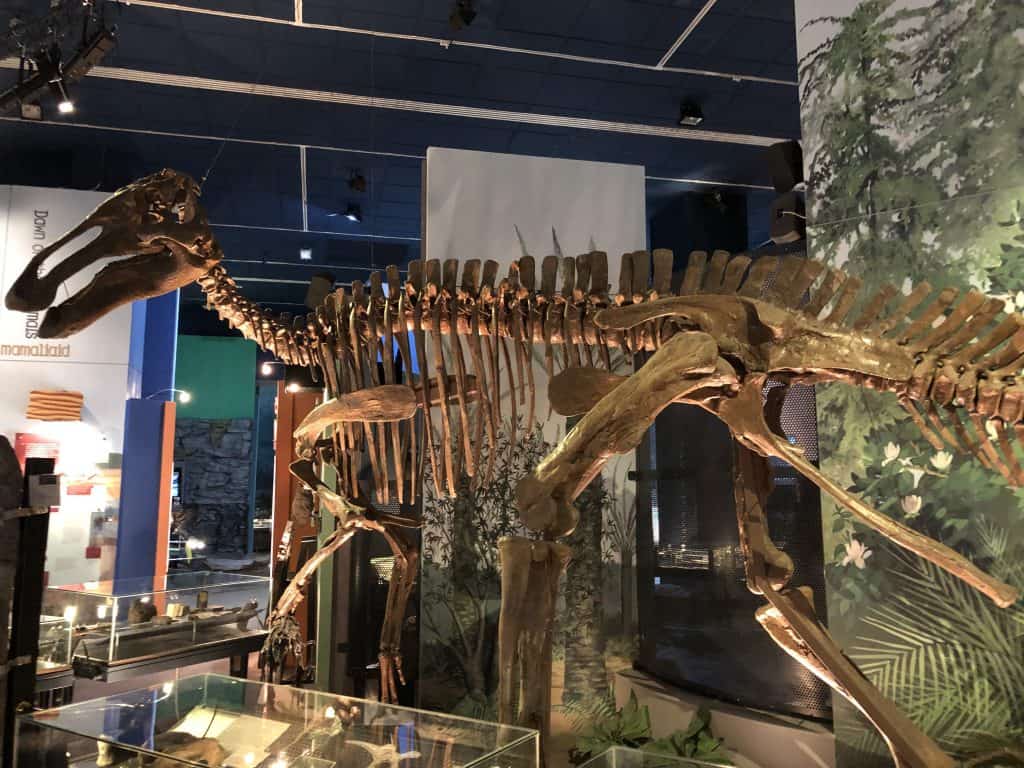
Theatre in Cardiff
Since we love to see theatre while we’re travelling we checked event listings and were able to book tickets to a touring production of Ghost the Musical at New Theatre. New Theatre, opened in 1906, is Wales’ number one venue for the best in drama, musicals, dance, children’s shows and pantomime.
Located at Park Place, Cardiff.
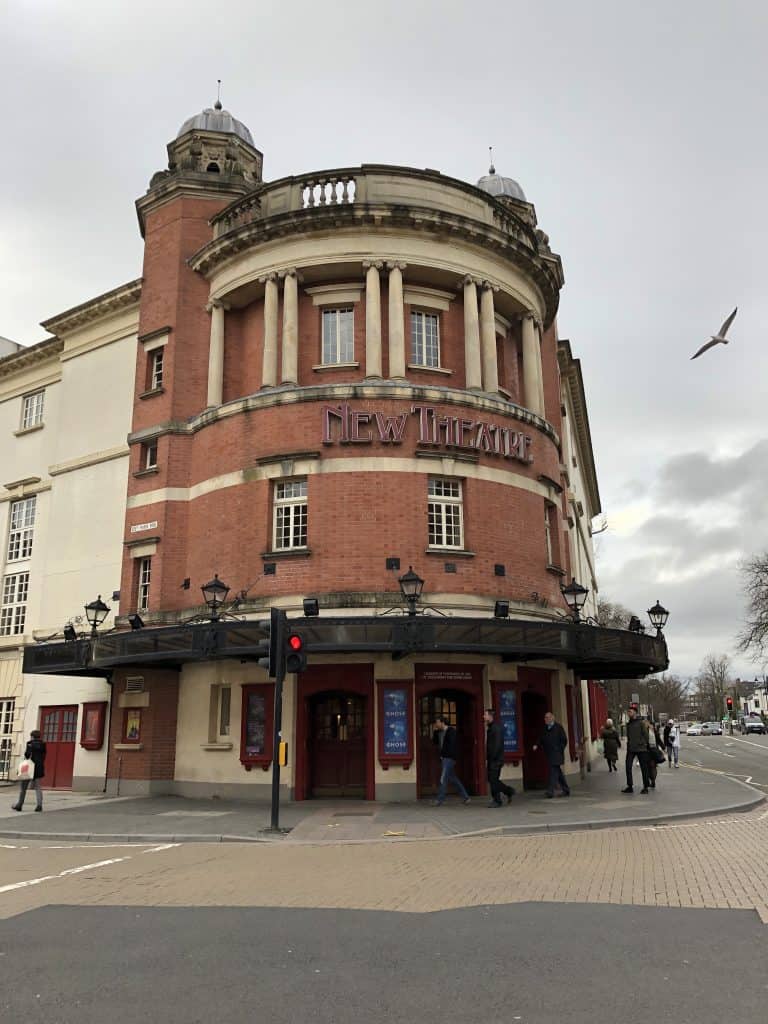
Things to do in Cardiff Bay
We spent days 2 and 3 of our visit on day trips from Cardiff to Pembrokeshire, Caerphilly Castle, Hay-on-Way and Brecon Beacons National Park. Day 4 we devoted to seeing Cardiff Bay.
Cardiff Bay is a waterfront development in the old Cardiff docklands that had been the hub of the world’s coal industry. The area had fallen into decay until late in the 1980s when the redevelopment was launched that transformed the area into a popular tourist attraction with restaurants, shops, a hotel and spa and a destination for sailing and water sports.
Water Taxi to Cardiff Bay
We decided that our best transportation option was to take a water taxi from Bute Park (a short walk from our hotel) to Cardiff Bay. We took Cardiff Boat which has a 90 seat water bus “Princess Katharine” leaving Bute Park for Cardiff Bay on the half hour. The trip takes approximately 25 minutes and includes commentary. The other option is Aquabus which leaves Bute Park on the hour. Pick whichever one suits your timing.
Service is year-round weather permitting. Tickets are purchased on board for both companies.
Mermaid Quay Shops & Restaurants
Our first priority after disembarking from the water taxi was checking out the shops and restaurants of Mermaid Quay along the waterfront of Cardiff Bay. Unfortunately, the downside of visiting in the off-season is that there was a great deal of construction on the day of our visit making it difficult to get around so we grabbed a bite to eat and decided to go for a walk around the harbour.
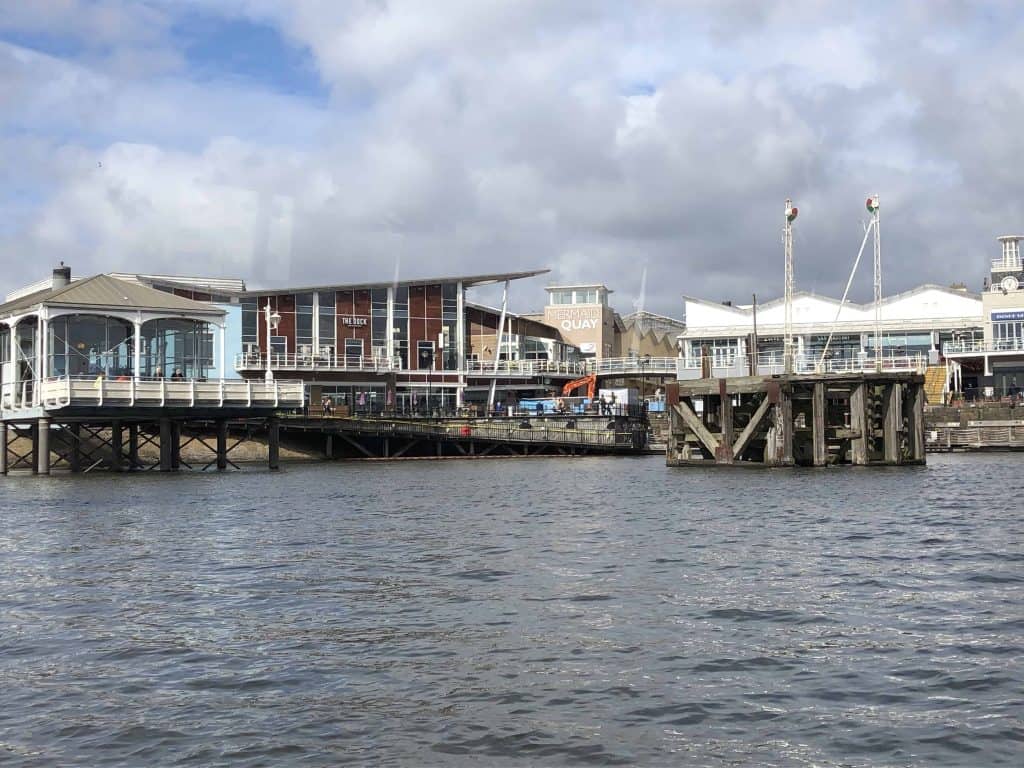
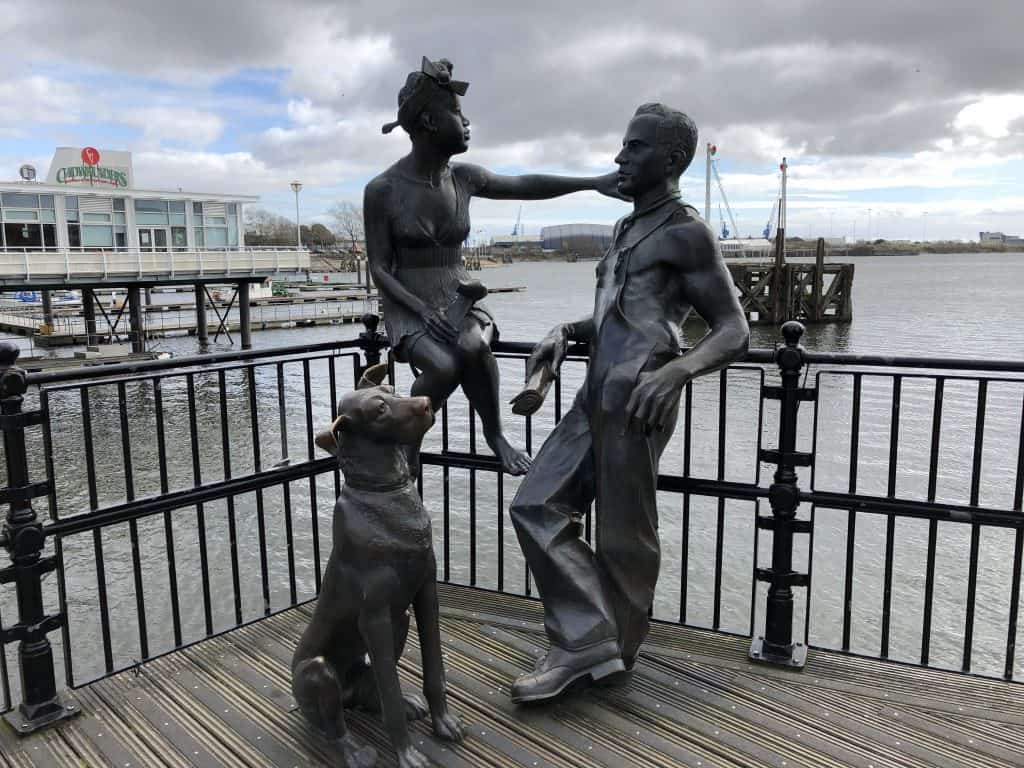
Wales Millennium Centre
The Wales Millennium Centre is the national arts centre of Wales located in Cardiff Bay. The stunning building, designed by architect Jonathan Adams and opened in 2004, is intended to reflect “both the natural and industrial landscape of Wales, taking inspiration from the sea-cliffs and steel industry of South Wales and the jagged slate mines found in the north”. One of the building’s most striking features is the bilingual inscription by Gwyneth Lewis, National Poet of Wales, written in both Welsh and English. The words read: In These Stones Horizons Sing/ Creu Gwir Fel Gwydr O Ffwrnais Awen.
Located at Bute Place, Cardiff Bay. The centre’s in-house coffee-shop, Caffi, is located in the ground-floor foyer. There’s a gift shop in the foyer as well.
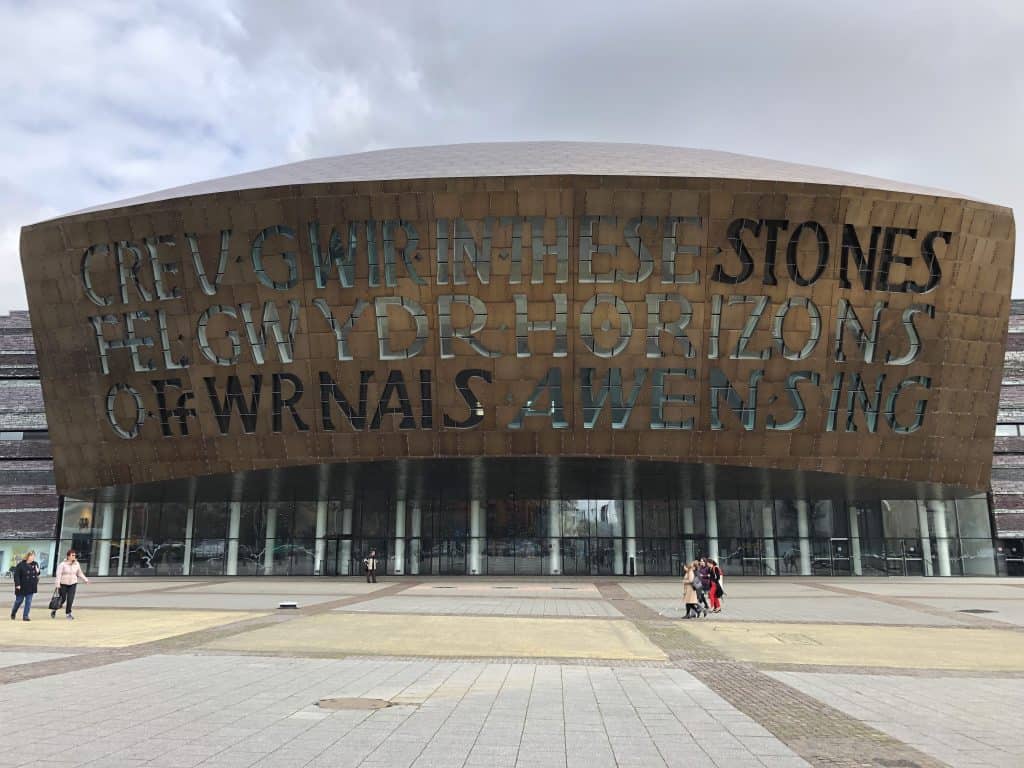
The Pierhead Building
The terracotta red brick Pierhead building, originally built in 1897 as offices for the Bute Docks Company (later known as the Cardiff Railway Company), is one of Cardiff’s most familiar landmarks. Today the building is part of the National Assembly of Wales and used as a visitor, events and conference venue which hosts art exhibitions and historical displays. Just outside the building you will find the delightful Pierhead Carousel.
The Pierhead’s usual opening hours are 09:30 – 16:30, Monday to Friday and 10.30 – 16.30 on Saturdays, Sundays and public holidays.
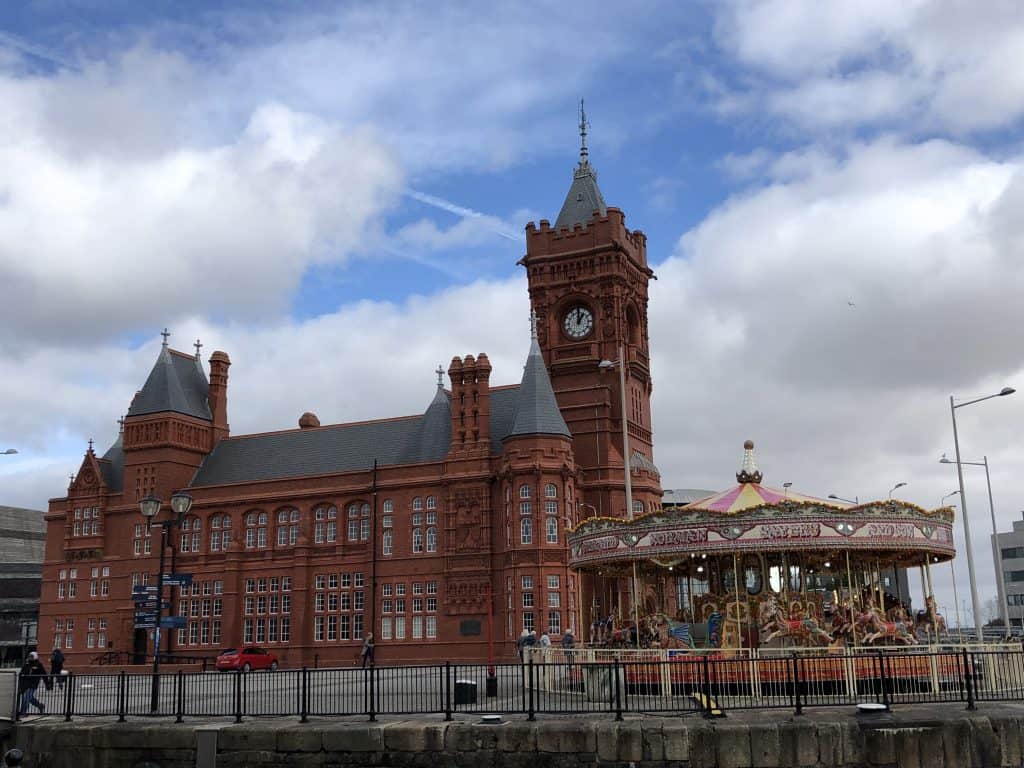
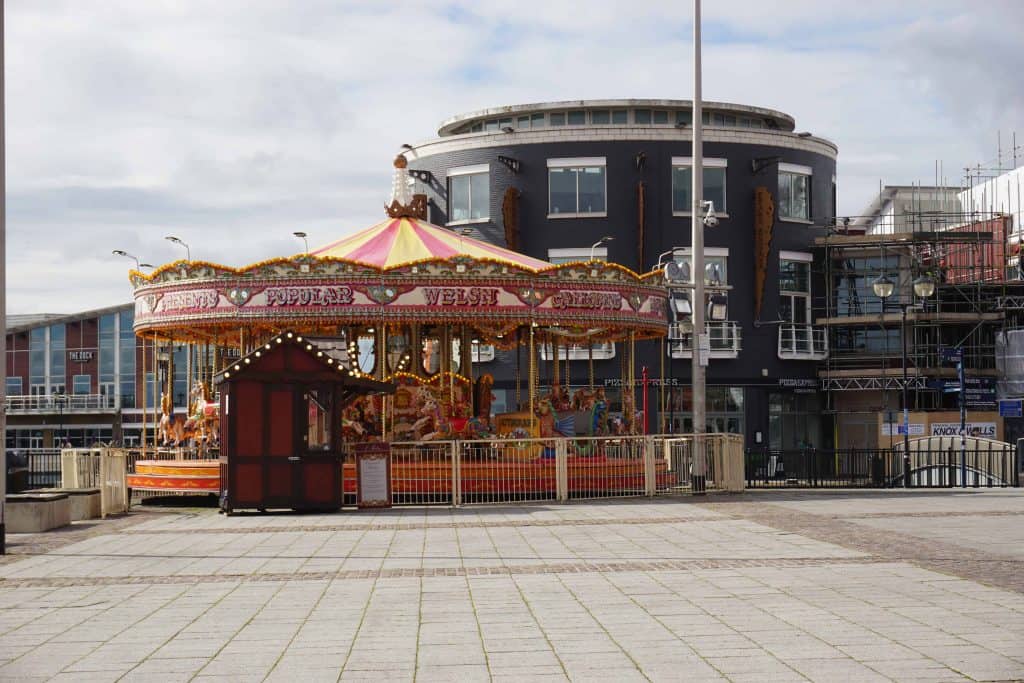
The National Assembly for Wales
The National Assembly for Wales was formed in 1999 as the democratically elected body to represent the interests of Wales and its people. The name was changed in 2020 to Senedd Cymru – Welsh Parliament.
The Senedd, completed in 2006, is the main parliamentary building and is open to the public. The design of the building is meant to symbolize an open democracy with the ground level mostly transparent and meetings held on the lower level. It has also been built with sustainability in mind. Admission is free and tours are available.
Located in Cardiff Bay. Opening hours vary – check the website for details. Visitors must pass through security to enter the building which includes passing through a metal detector and x-ray screening of items.
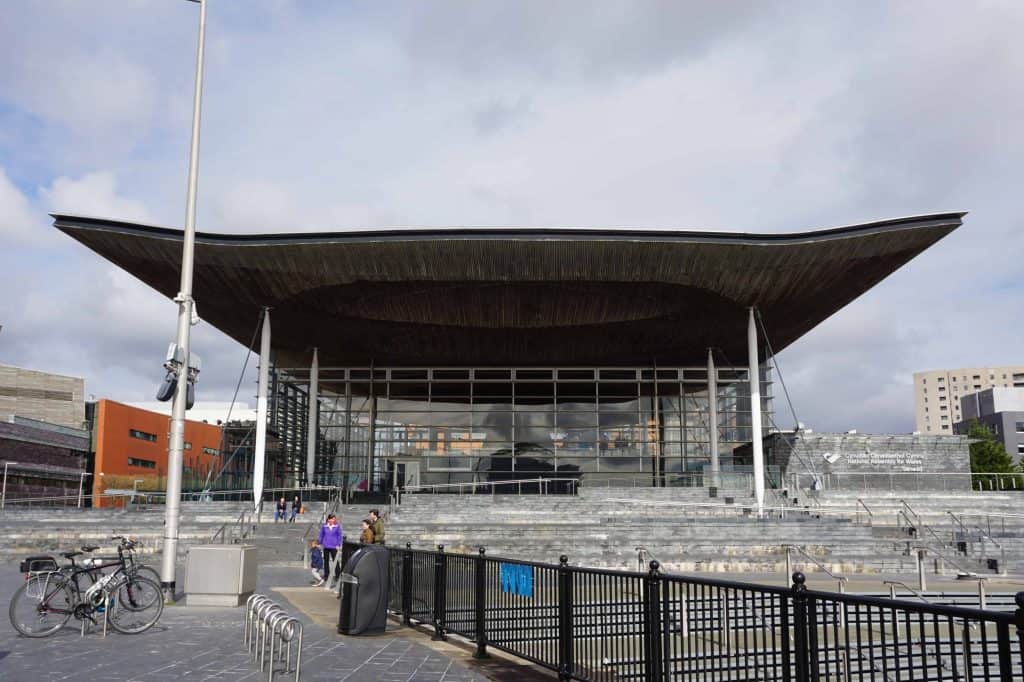
Norwegian Church Arts Centre
The Norwegian Church in Cardiff Bay was originally built to serve Norwegian sailors who were working on the docks in Cardiff. It also has an interesting claim to fame in that it is the church where author, Roald Dahl was christened. The building has been completely restored and today it houses an art gallery and a cafe serving sandwiches, homemade cakes and more.
Located on Harbor Drive, Cardiff Bay. Admission is free. The cafe is open 10:30am – 4:00 pm. Free wifi is available.
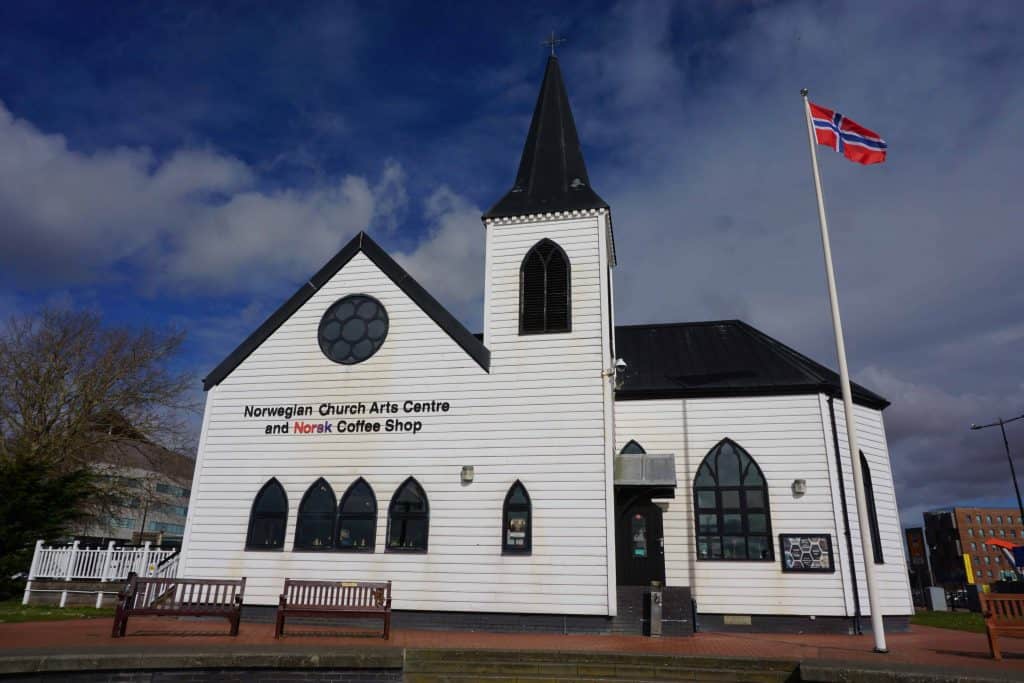
Walk the Cardiff Bay Barrage
As you walk around the inner harbour of Cardiff Bay, continue out onto the Barrage embankment. The Cardiff Bay Barrage is 1.1 km long and extends from the Cardiff docks in the north to the Penarth Marina in the south. Construction of the Barrage was a major civil engineering project that was part of the redevelopment of Cardiff Bay. The Barrage functions like a dam trapping water from two rivers thus creating a freshwater lake which forms a scenic backdrop to the Cardiff Bay development.
There’s a pathway on the Barrage which is safe to walk, cycle, or push strollers. There’s even a children’s playground and an outdoor gym along the way and you will enjoy beautiful views both across the bay and back towards the Cardiff Bay development.
If you walk across to Penarth Marina and prefer not to walk back then you can hop on one of the water taxis that cross back and forth between the Marina and Mermaid Quay. Or, if you’re feeling ambitious, then you can do as we did and keep walking in search of the Penarth Pier Pavilion.
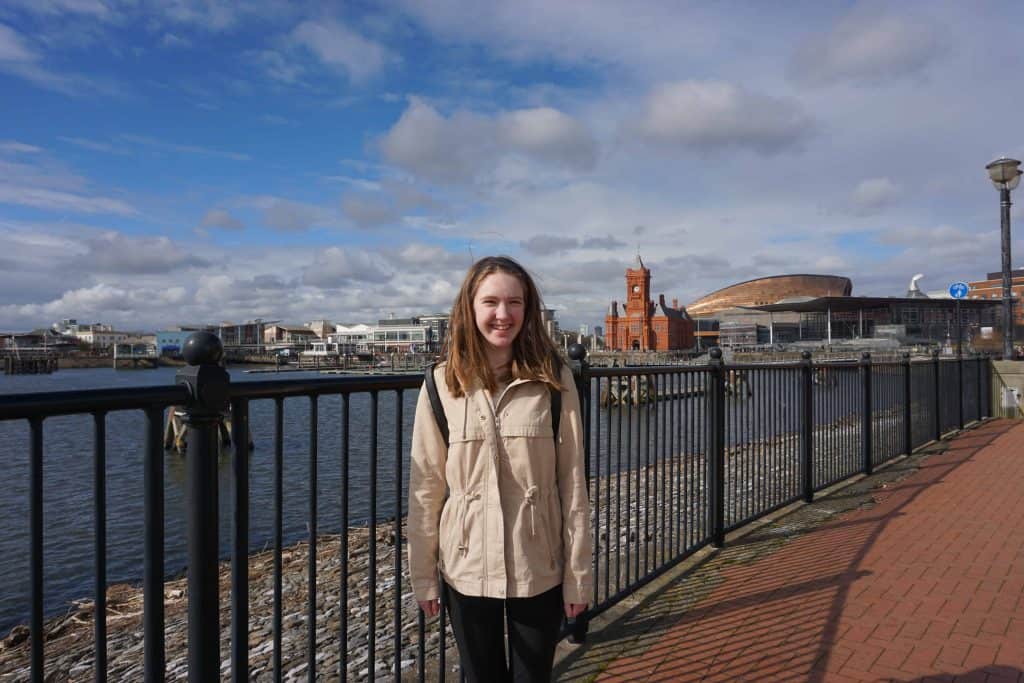
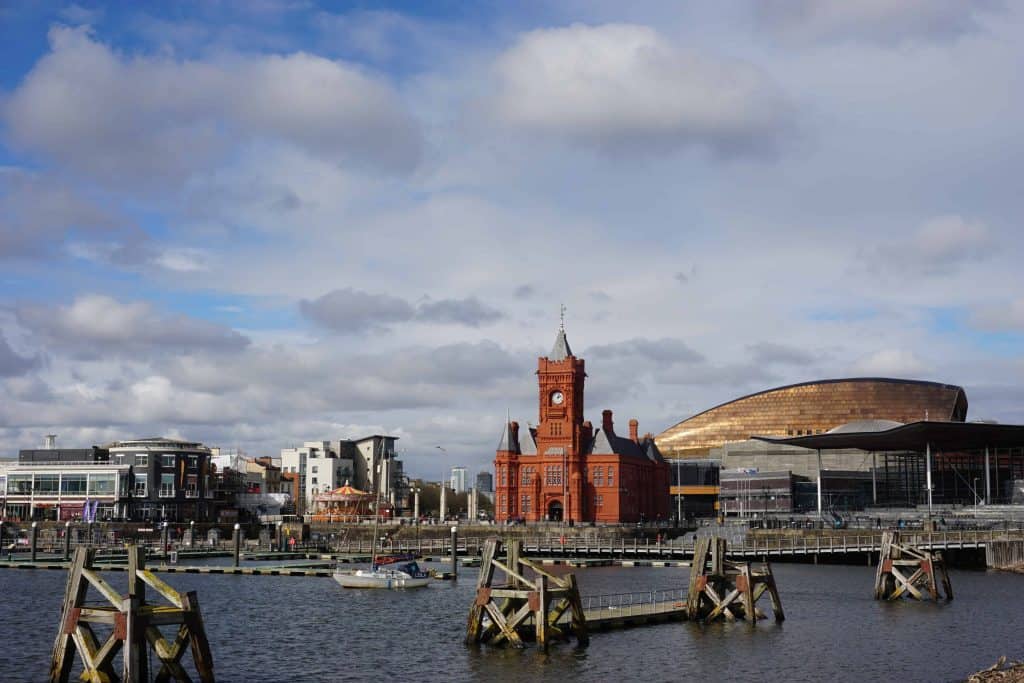
Walk to Penarth
If the weather is nice and you’re up to a bit of a walk then keep going toward Penarth to see the Victorian-era Penarth Pier Pavilion. It’s a lovely walk although we got quite lost for a time, a fair bit of it was uphill and it took a lot longer than we expected! The distance from Cardiff Bay to Penarth Pavilion is about 1.3 miles/2 km which should have taken us about 30 minutes to walk but took at least double that as we couldn’t figure out how to get there along the waterfront, walked uphill into town and then back downhill to the Esplanade. It was worth it to me but I’m not sure if my family would agree!!
The Penarth Pier Pavilion is a beautiful fully-restored art deco building redesigned to offer exhibitions, live music and theatre, cinema screenings and more. There is also a cafe on site serving locally sourced food and drink with an incredible sea view. We walked around the area while I took a great number of photos and then called for a cab to get back to our hotel.
Located on The Esplanade, Penarth. The Pavilion is open Monday – Sunday 10am – 5pm.
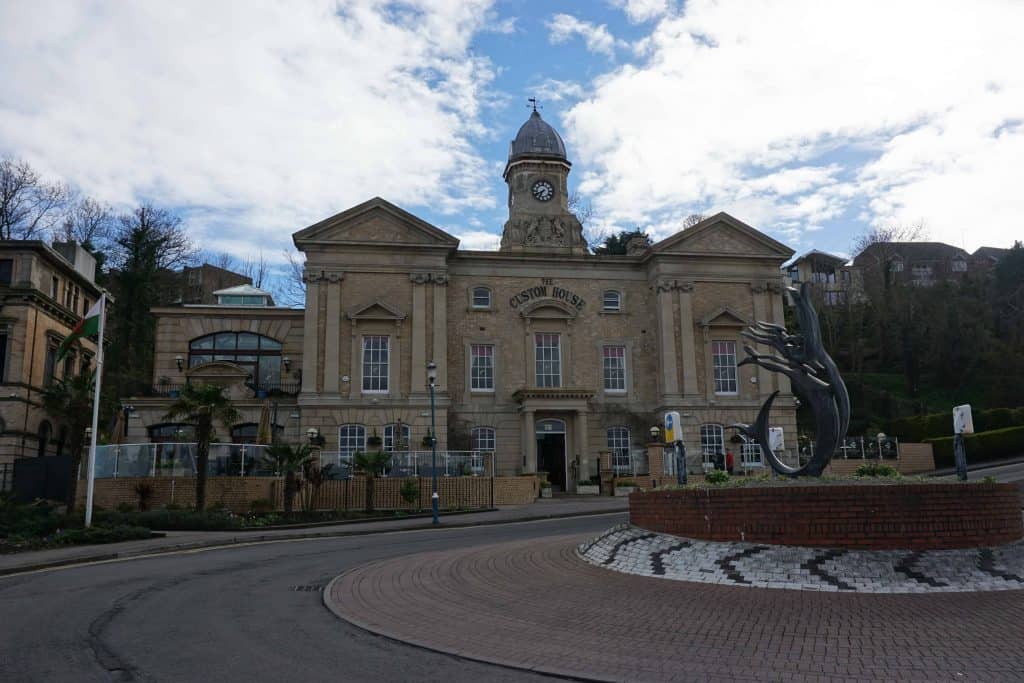
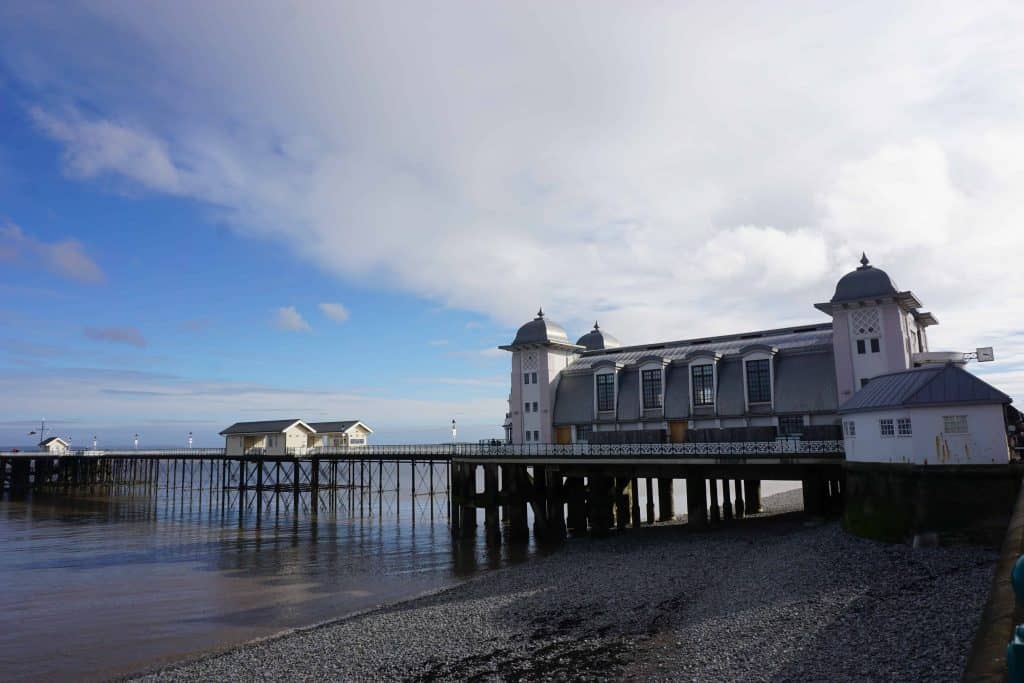
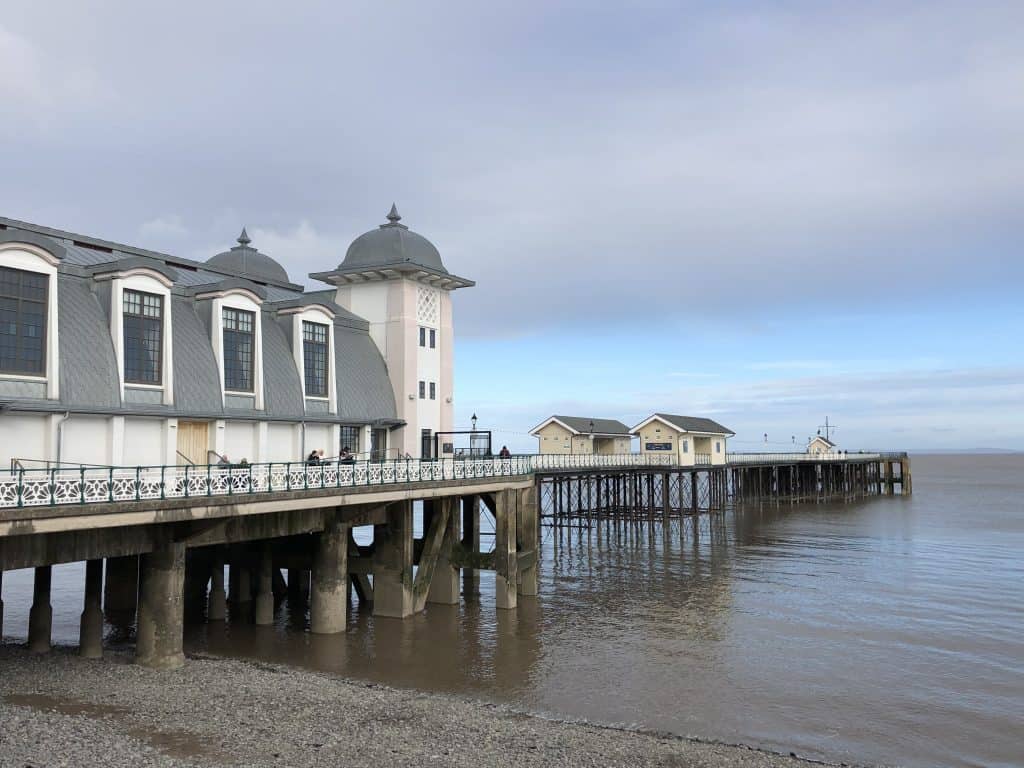
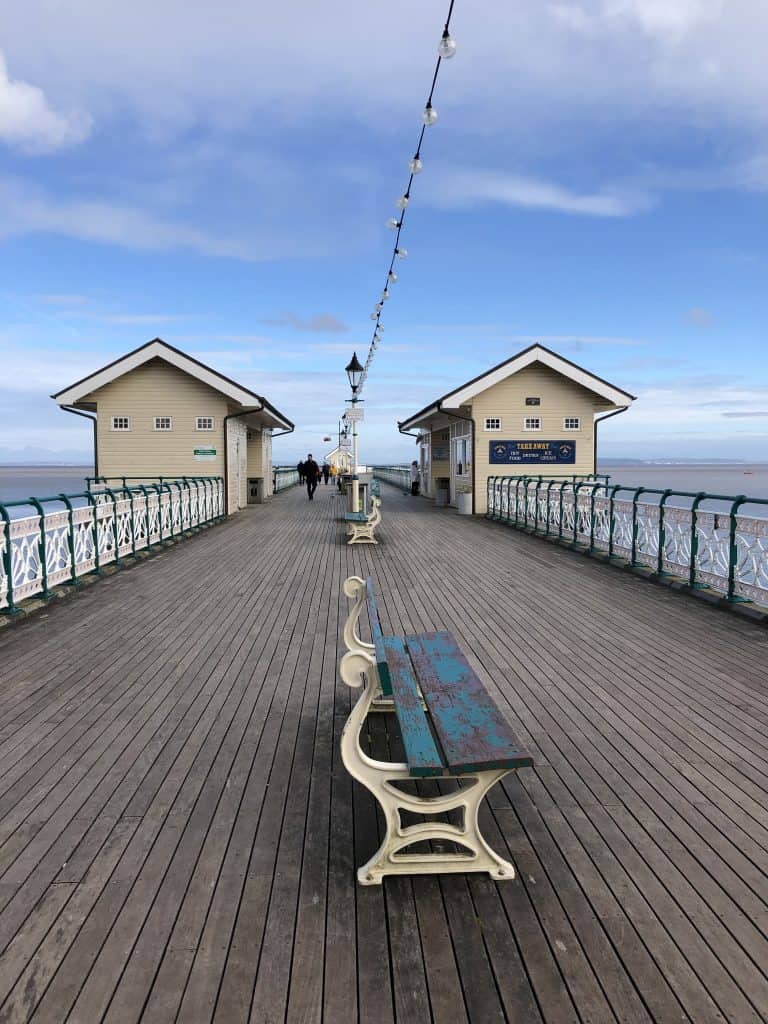
Day Trips from Cardiff
While in Cardiff, we went on two day trips with Real Wales Tours (Owner Nia Lloyd Knott now operates as Wild Trails Wales and offers guided hiking tours). The first was a day trip from Cardiff to the Pembrokeshire Coast where we visited St. Davids City to see the cathedral and saw the highlights of Pembrokeshire Coast National Park.
The Pembrokeshire Coast is Britain’s only truly coastal National Park, covering 240 square miles around Wales’ south-western shore and includes spectacular coastlines, sandy beaches, walking trails, wildlife viewing and historic sites. It would be quite easy to spend an entire vacation in this region but we had only one day to see as much as possible and our guide, Nia, helped us do that.
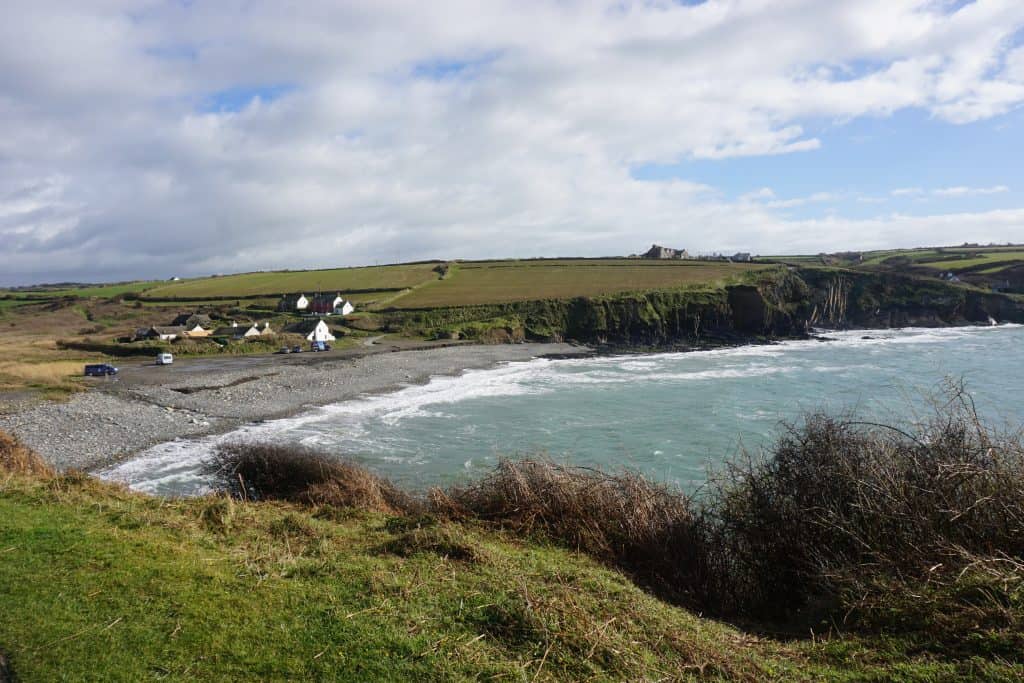
Our second day trip from Cardiff also with Real Wales Tours included visits to Hay-on-Wye, Caerphilly Castle and Brecon Beacons National Park. We started our day at Caerphilly Castle which is the largest castle in Wales and second only to Windsor Castle in all of Great Britain. From there we headed to the village of Hay-on-Wye which is known for its many bookstores. Finally, we spent some time in Brecon Beacons National Park hiking to one of the stunning waterfalls in the area known as Waterfall Country.
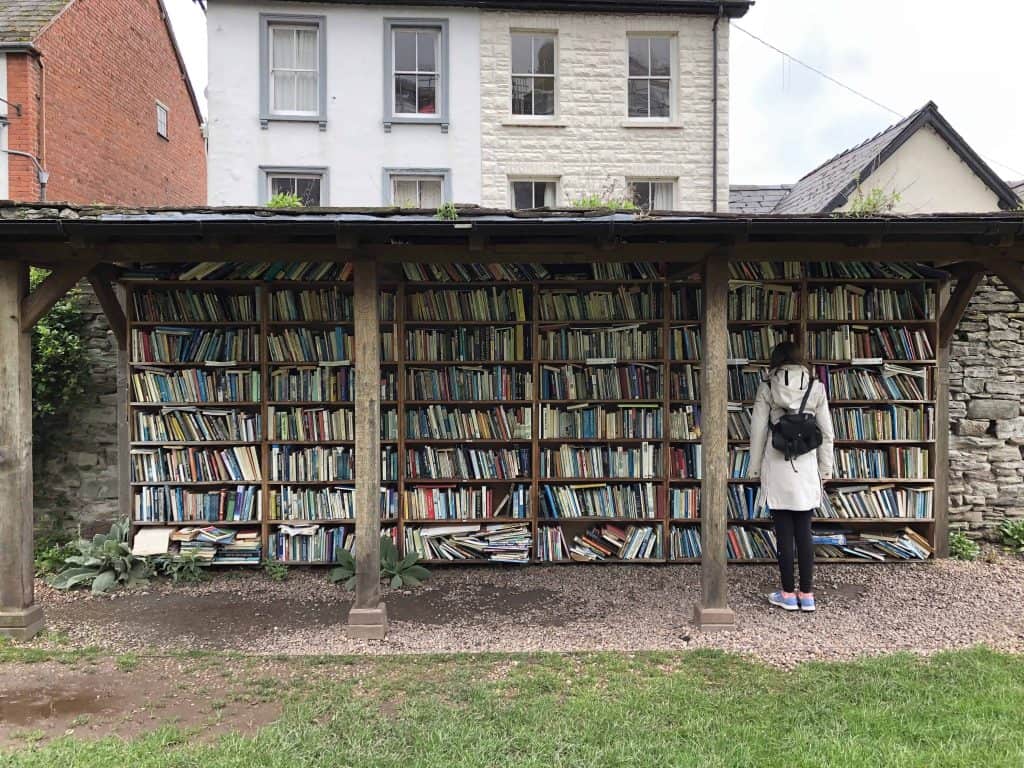
Where to Stay in Cardiff
We had a hard time finding a hotel room in Cardiff because of the Six Nations Rugby Championship game that was taking place while we were there. We finally found a room at the Hilton Cardiff although the only option available was a non-refundable rate. We were quite happy with the hotel which is located in the heart of the city directly opposite Cardiff Castle. We loved the location as we were able to walk everywhere in the city centre and hopped on a water taxi in nearby Bute Park to get to Cardiff Bay.
Our room was modern and spacious with a great view of the city. Our room rate included continental breakfast (hot and cold options) in the Executive Lounge which has an excellent view of Cardiff Castle and complimentary wifi. During our stay we enjoyed both room service and the hotel’s restaurant.
Find the best deal, compare prices, and read what other travelers have to say about Hilton Cardiff at TripAdvisor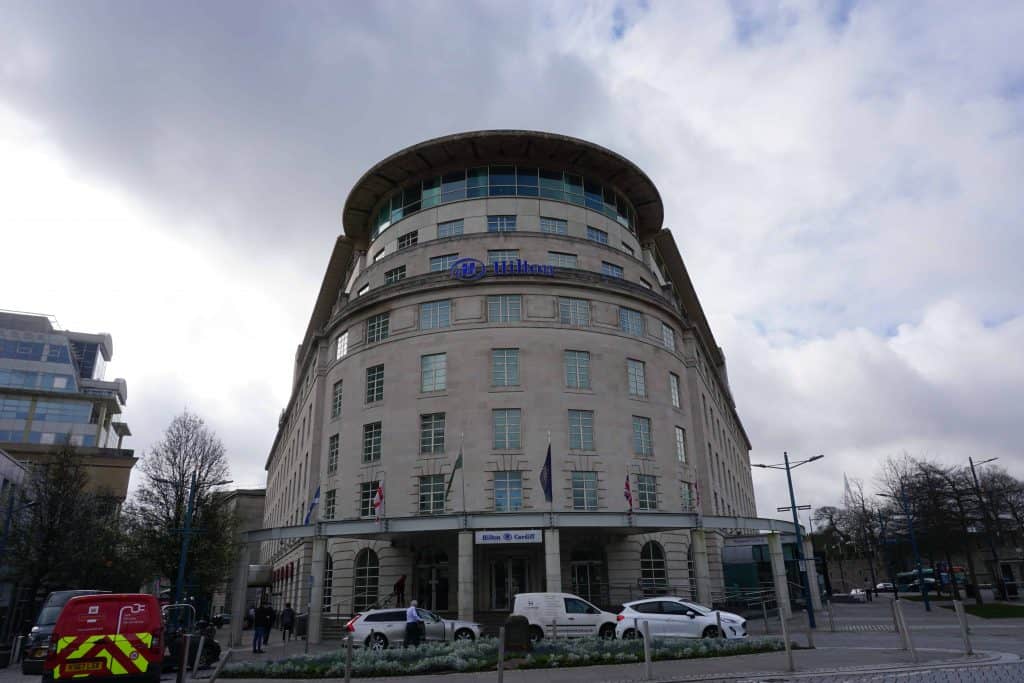
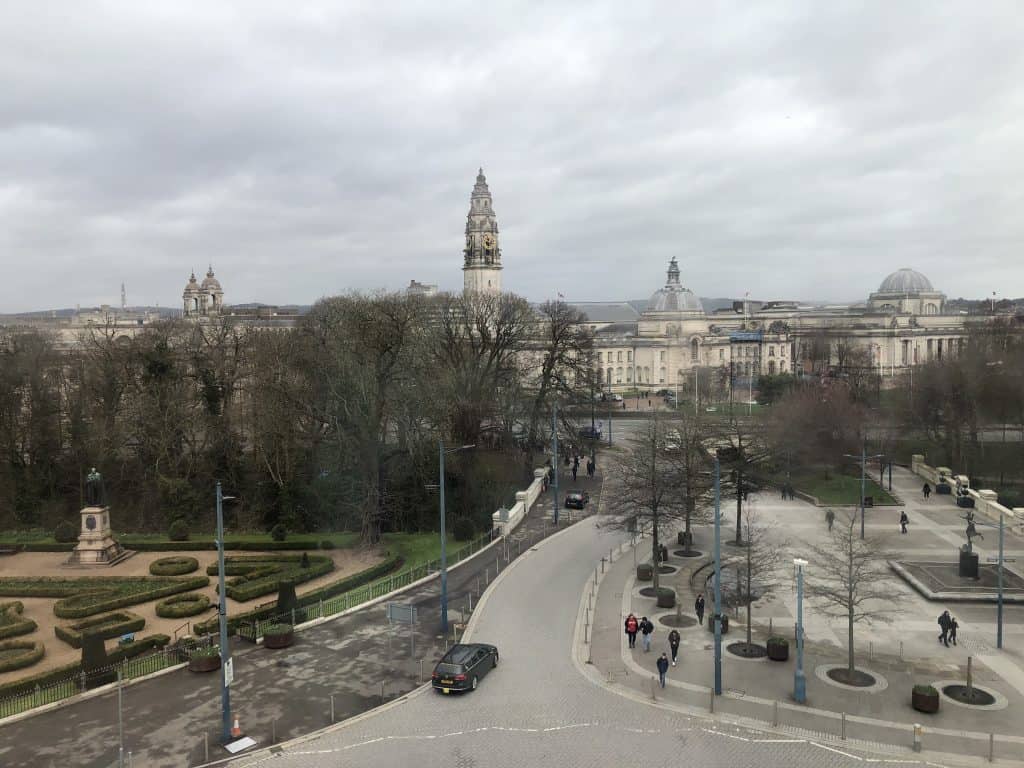
Related Articles
A Day Trip from Cardiff to Pembrokeshire with Real Wales Tours
A Day Trip from Cardiff to Caerphilly Castle, Hay-on-Wye and Brecon Beacons National Park
Pin This For Later
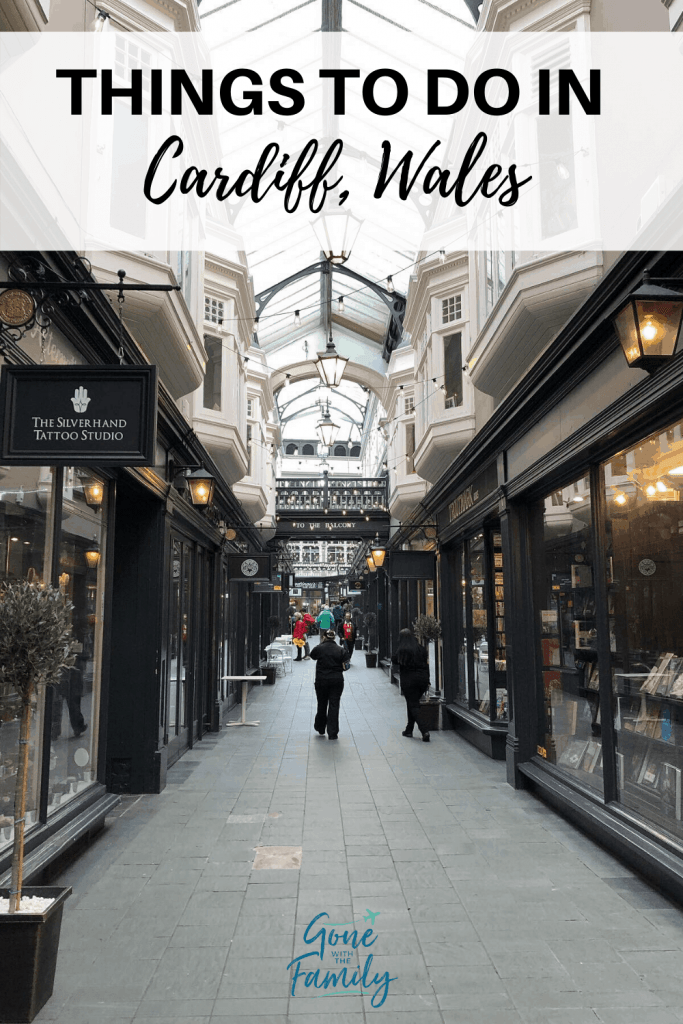

Leave a Reply